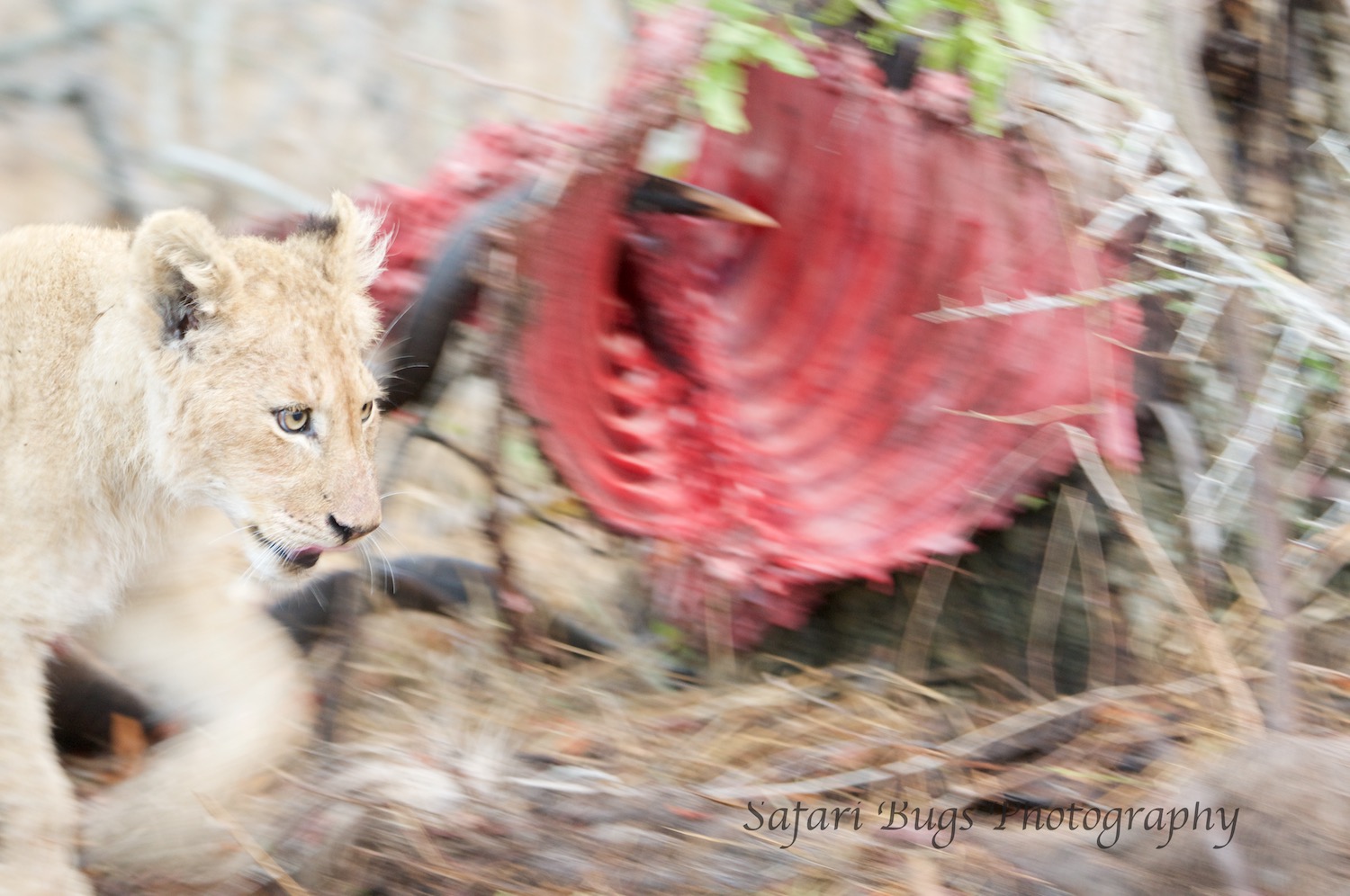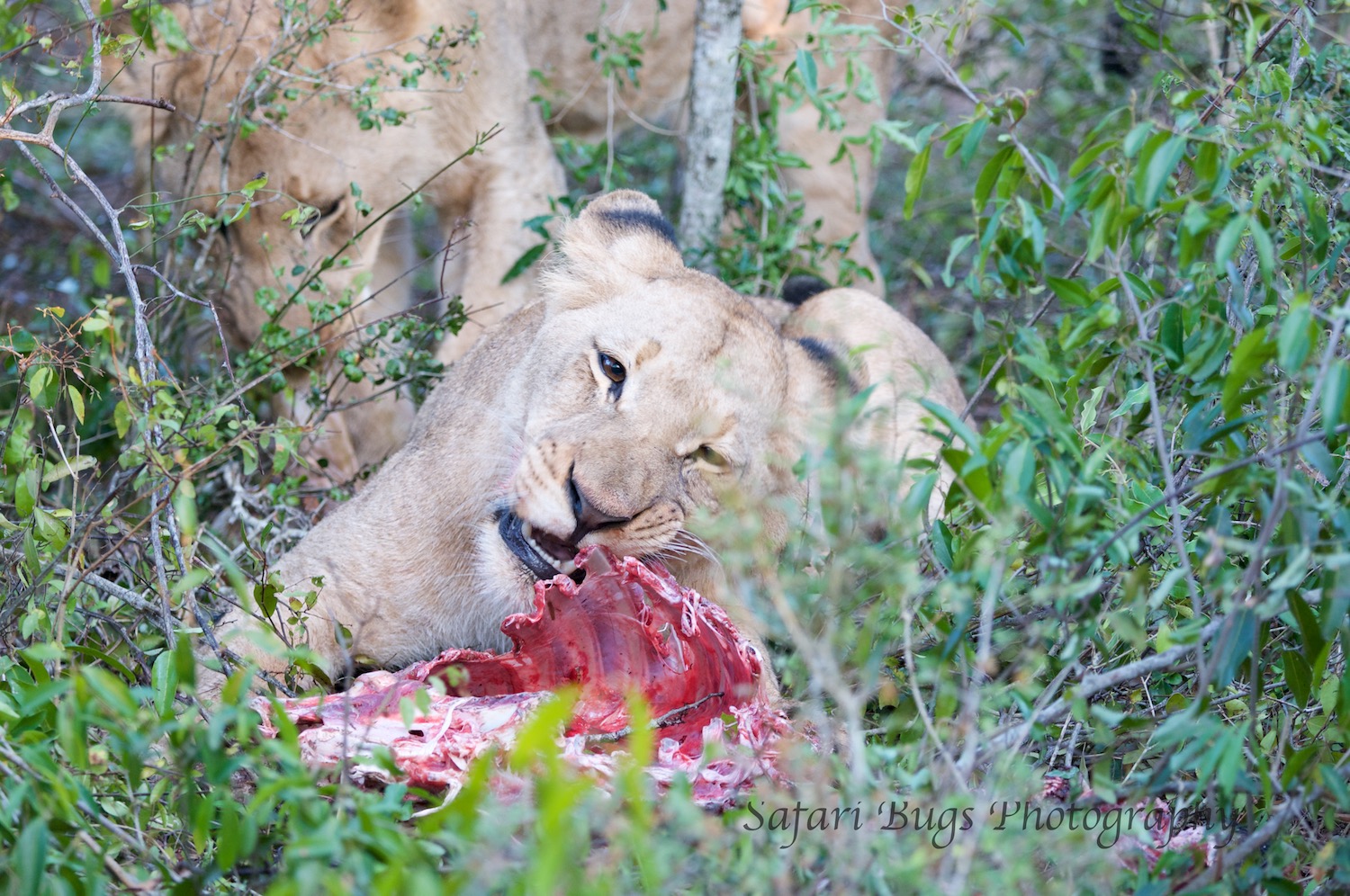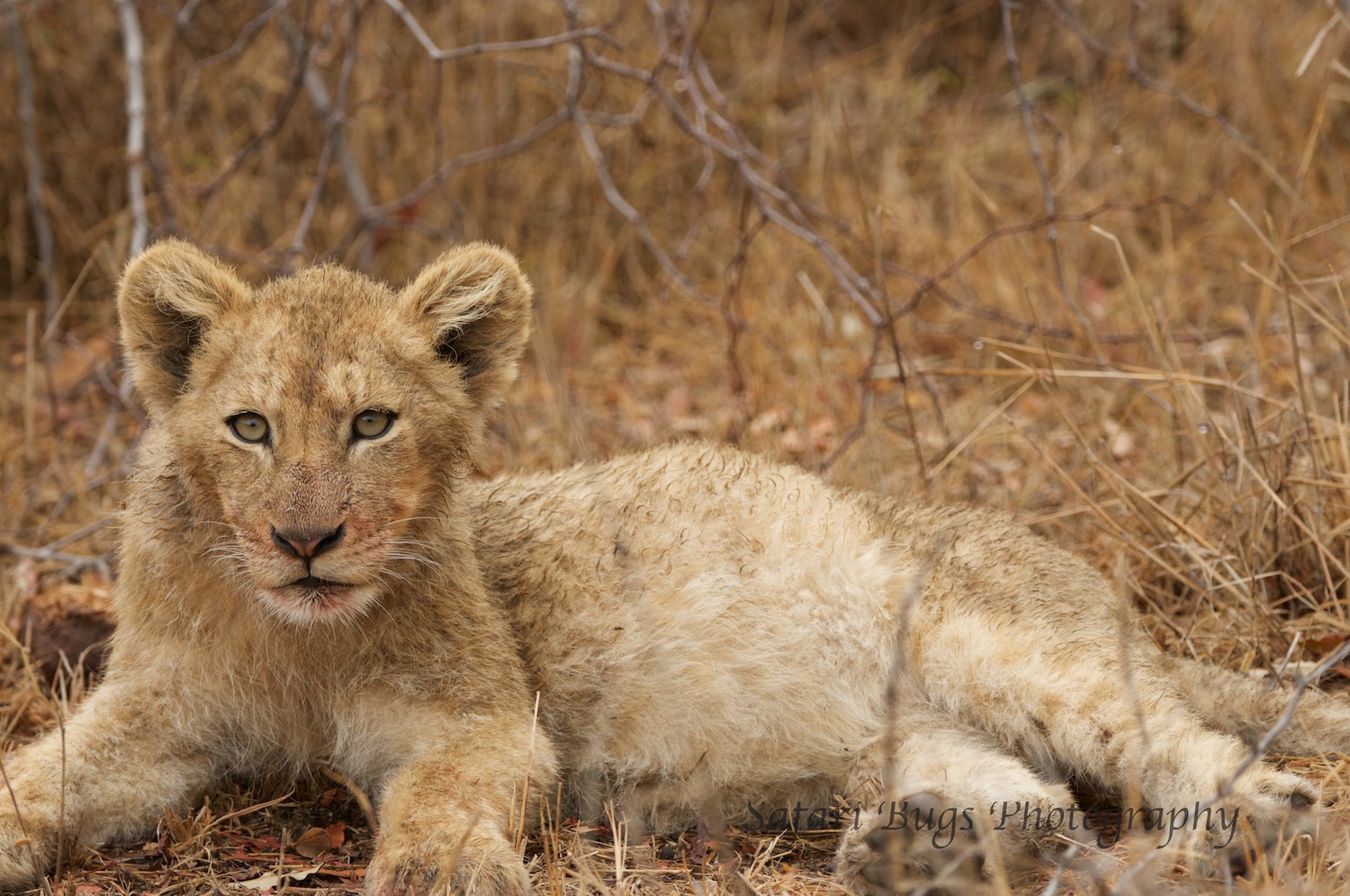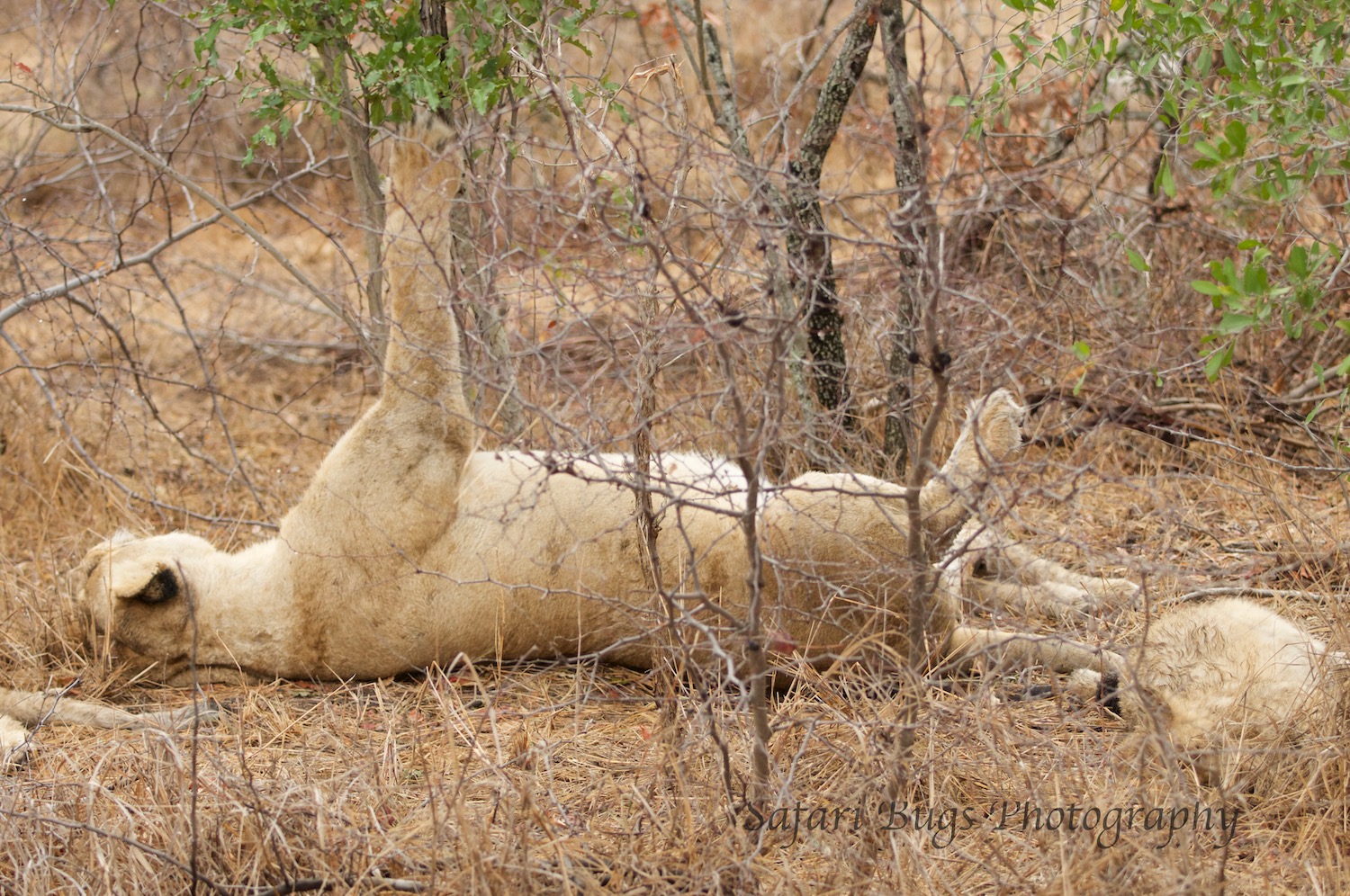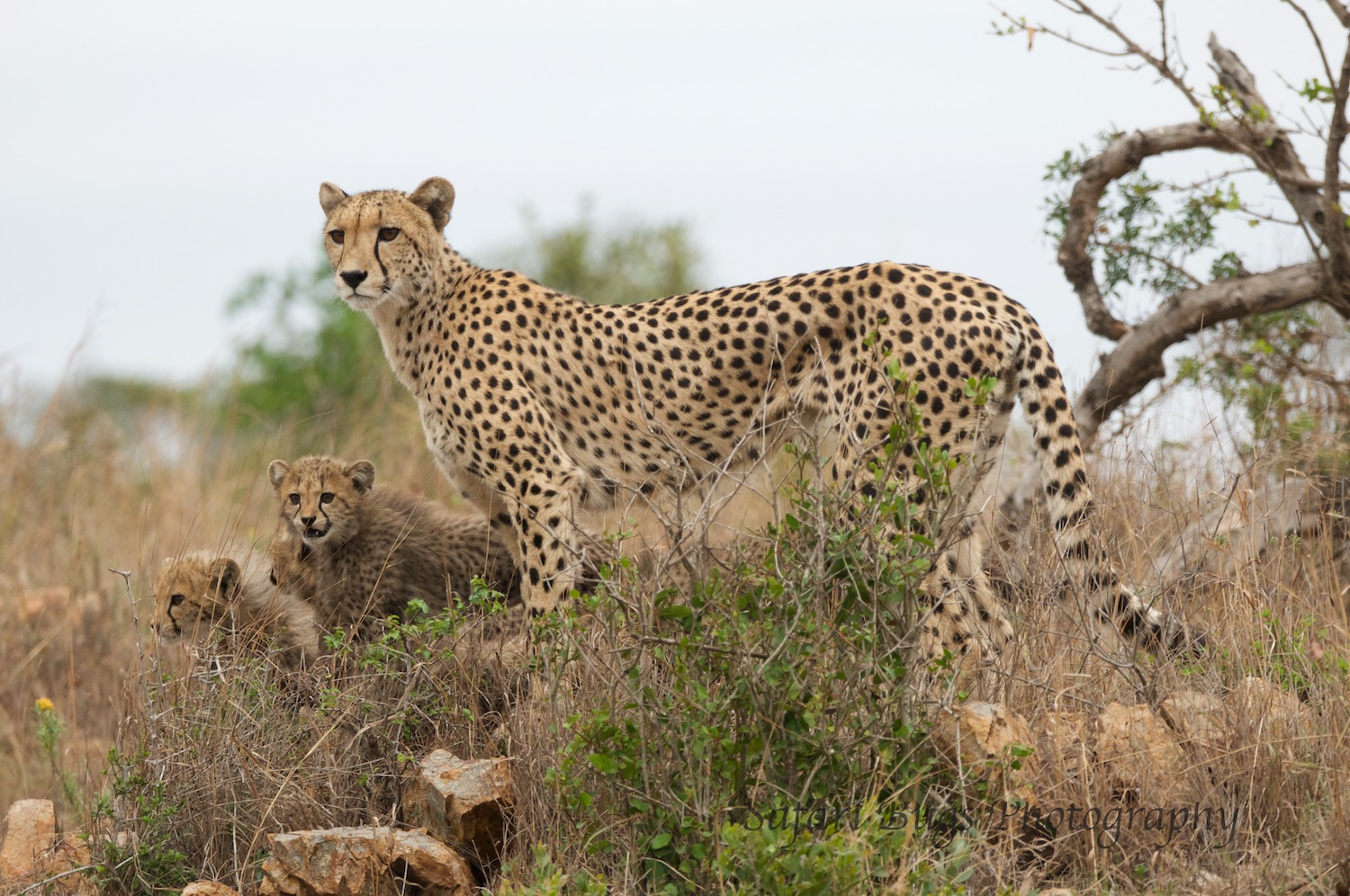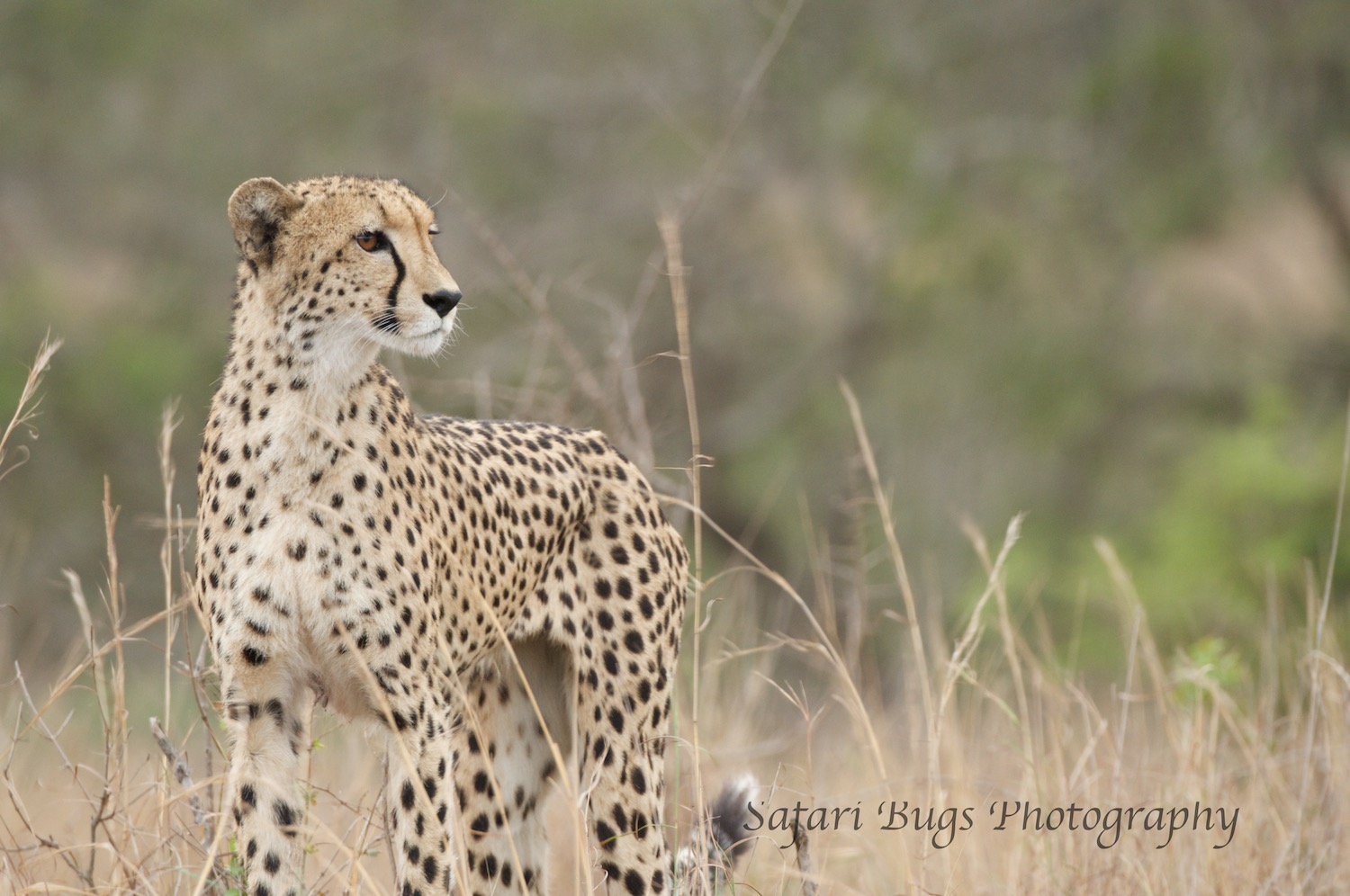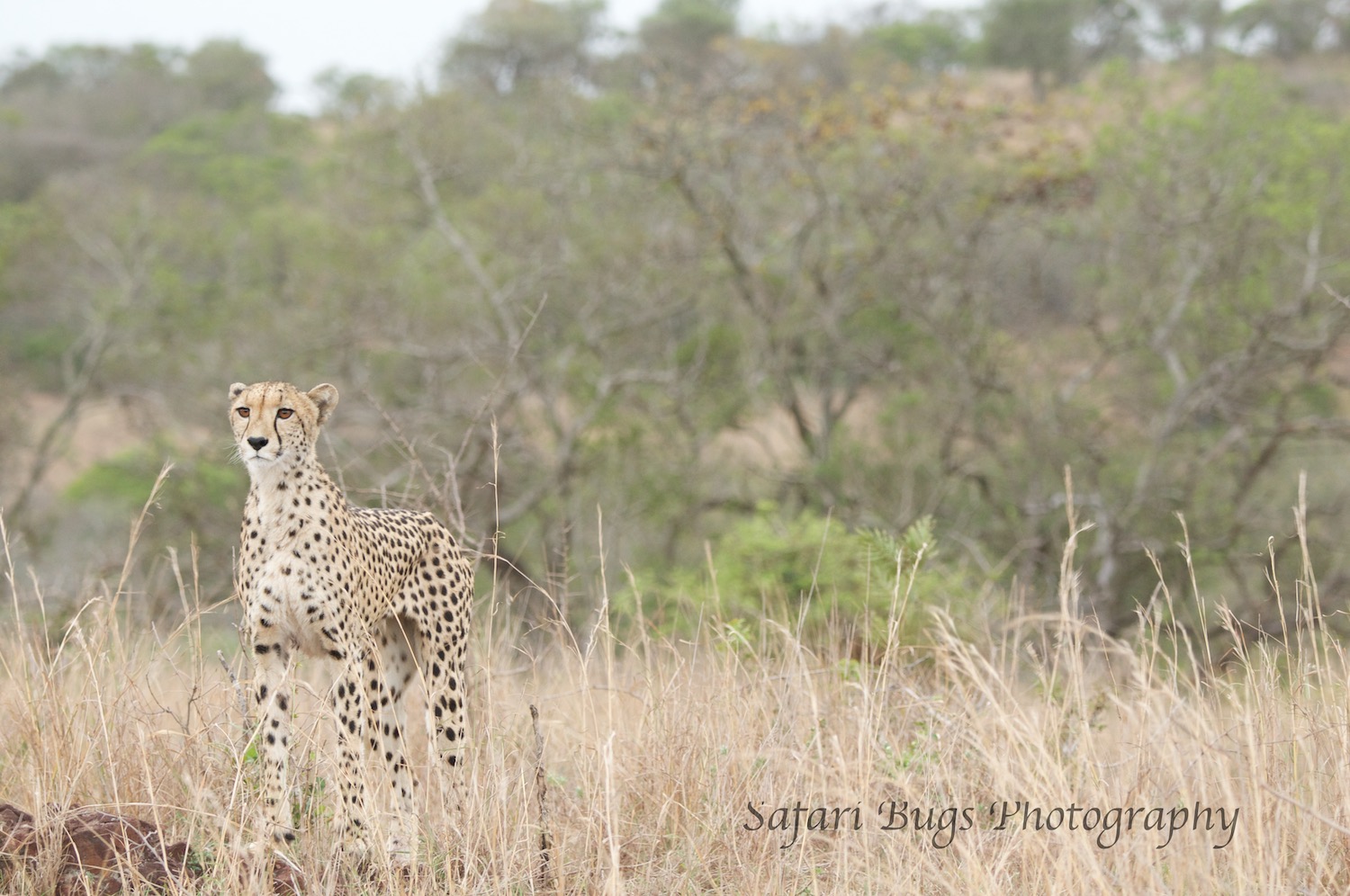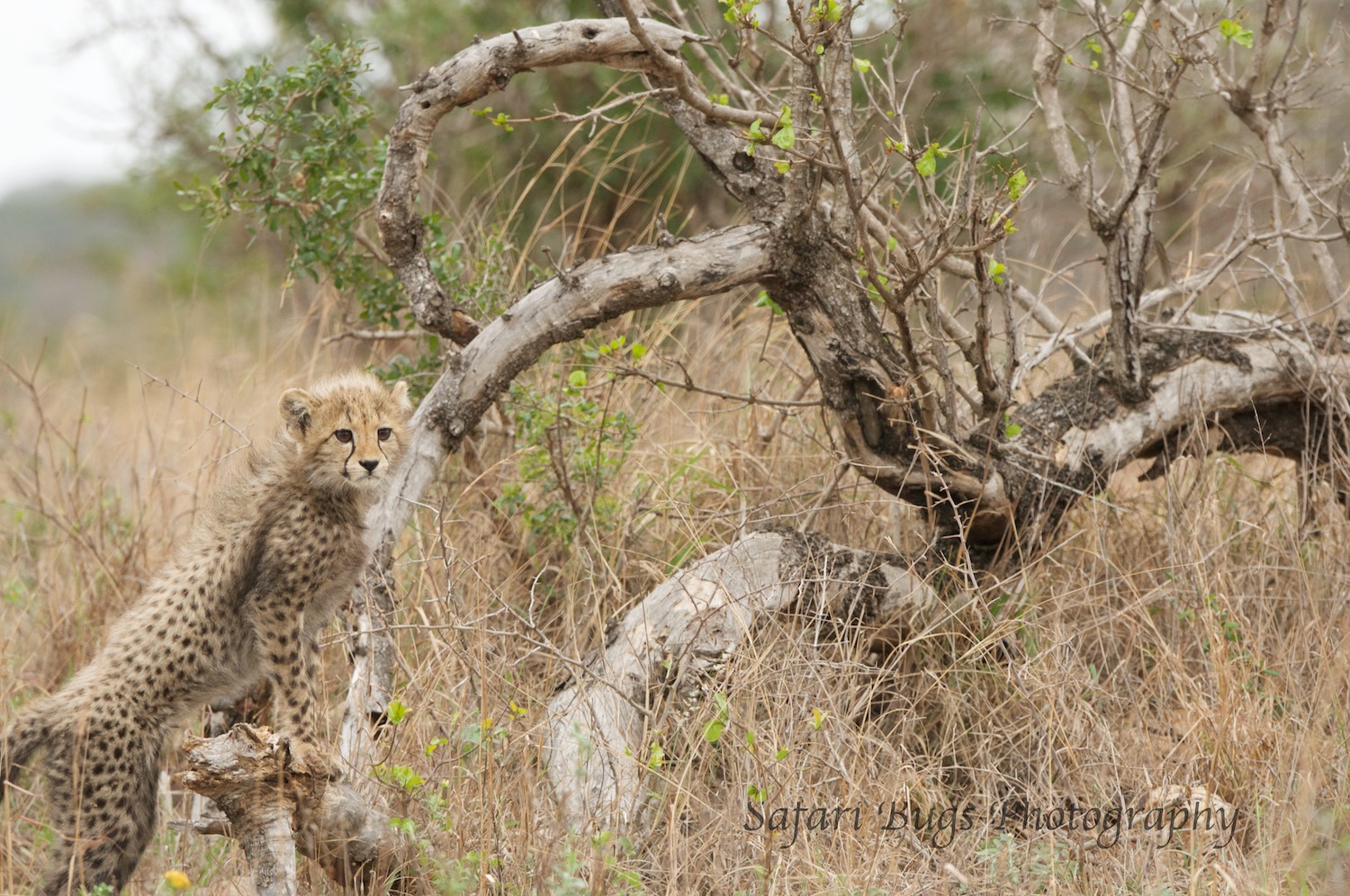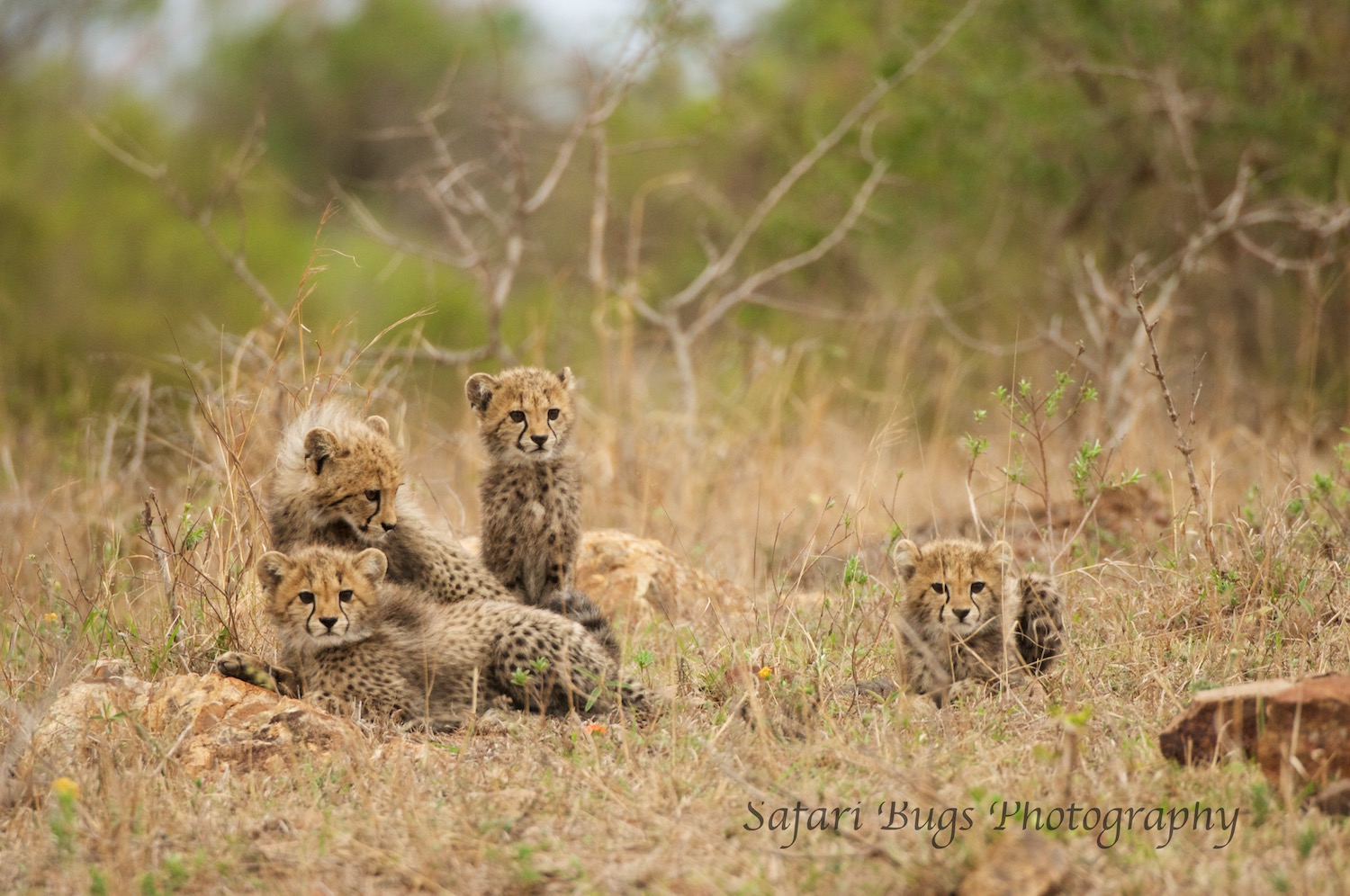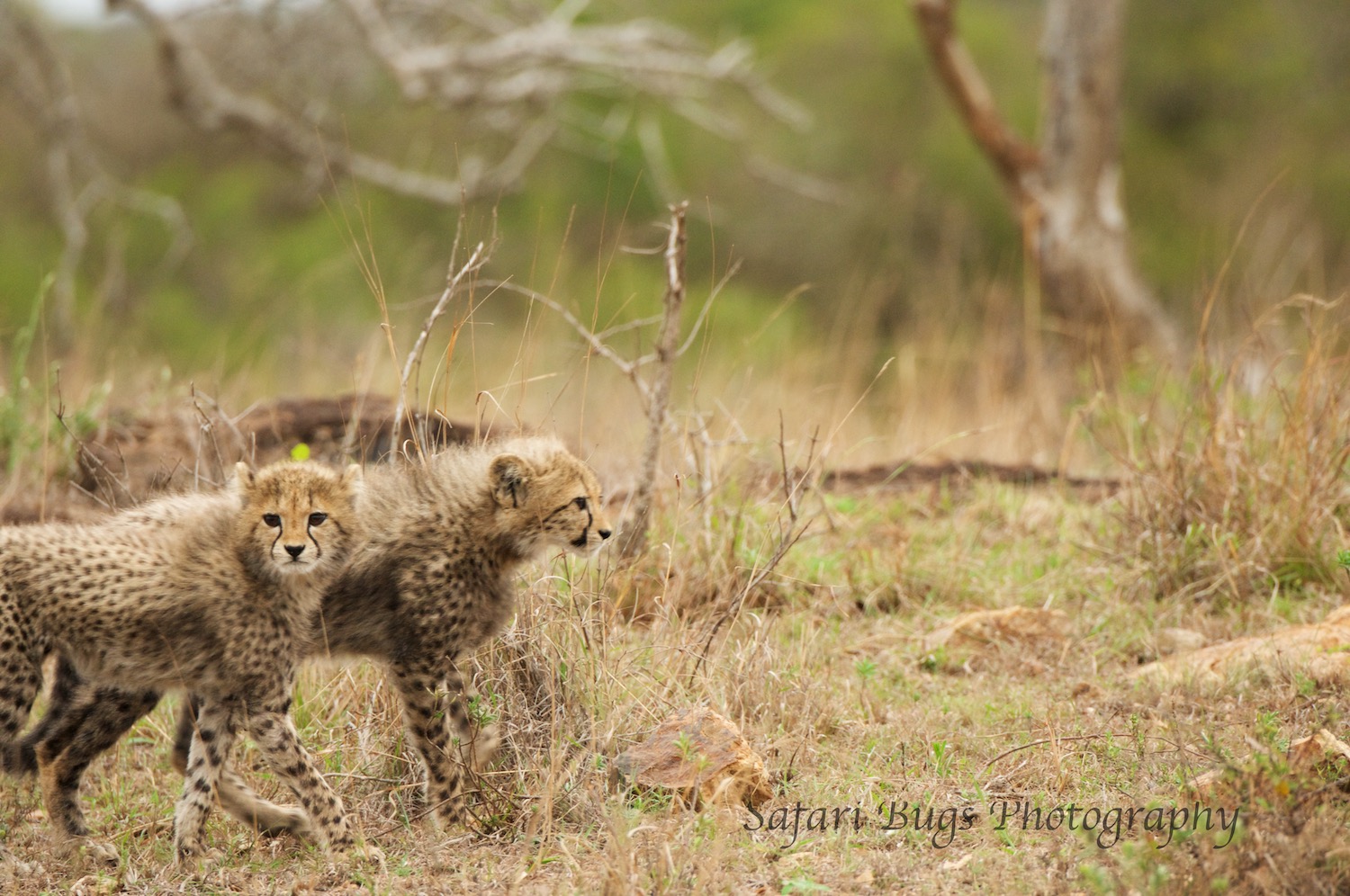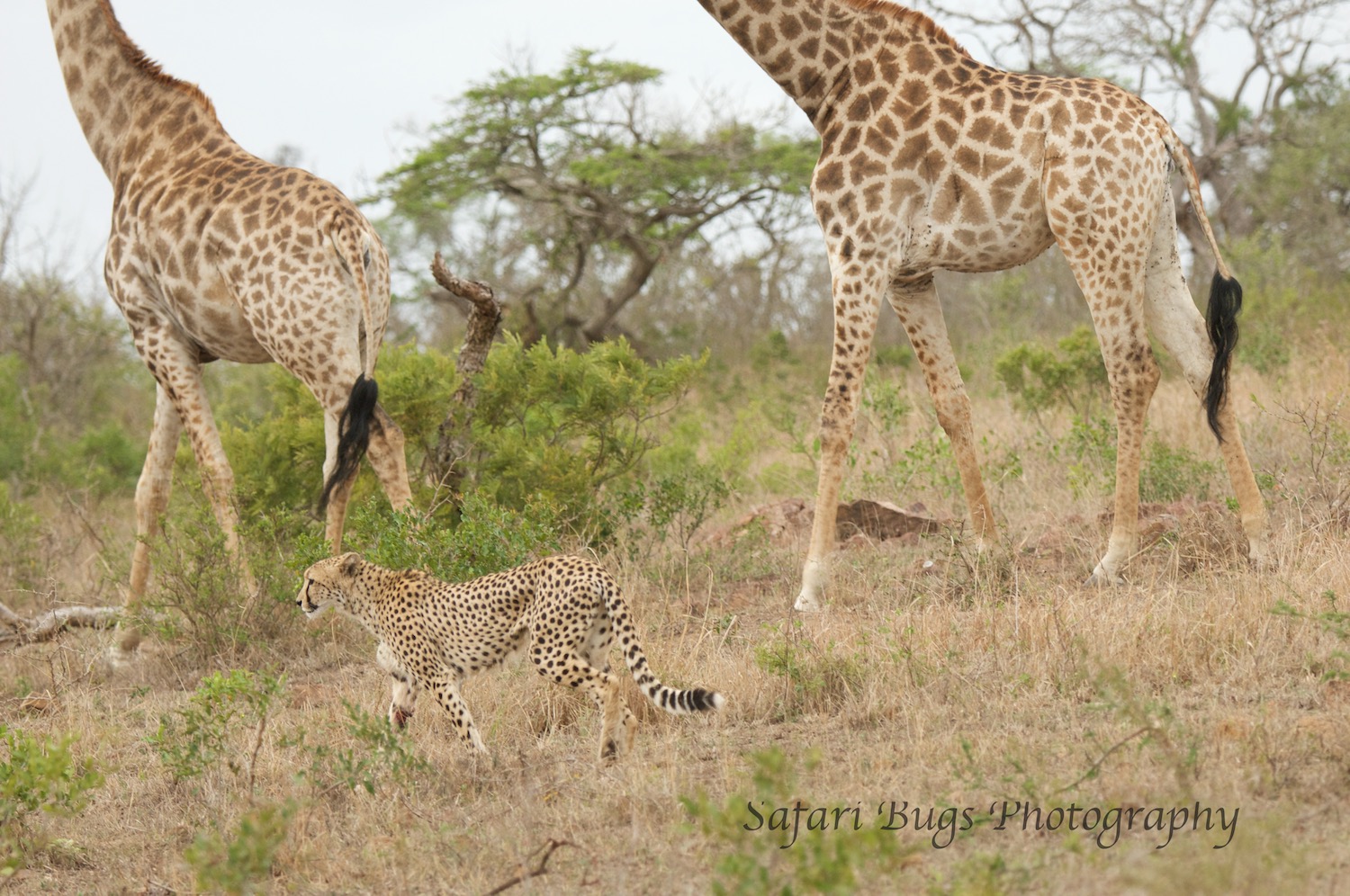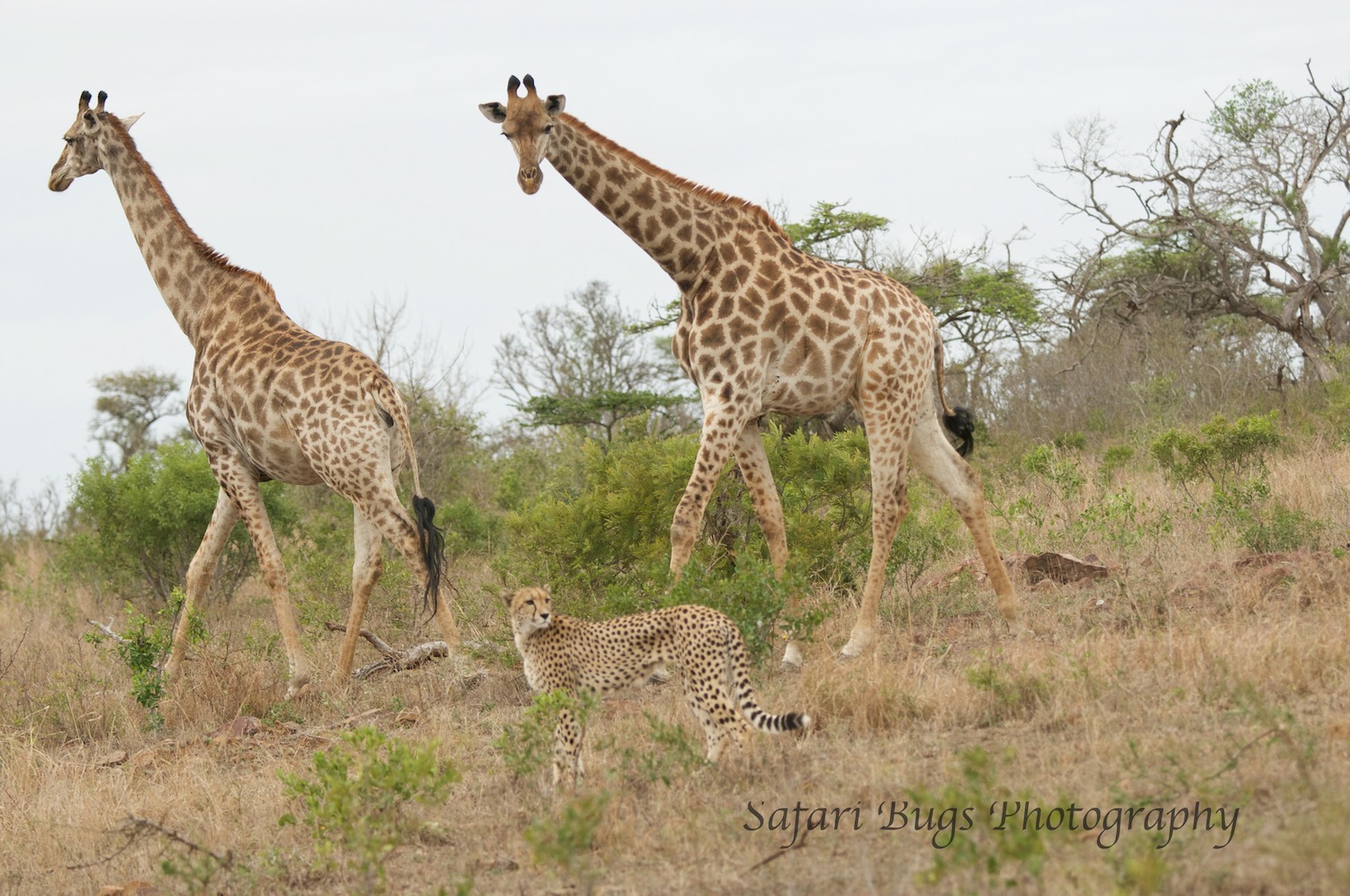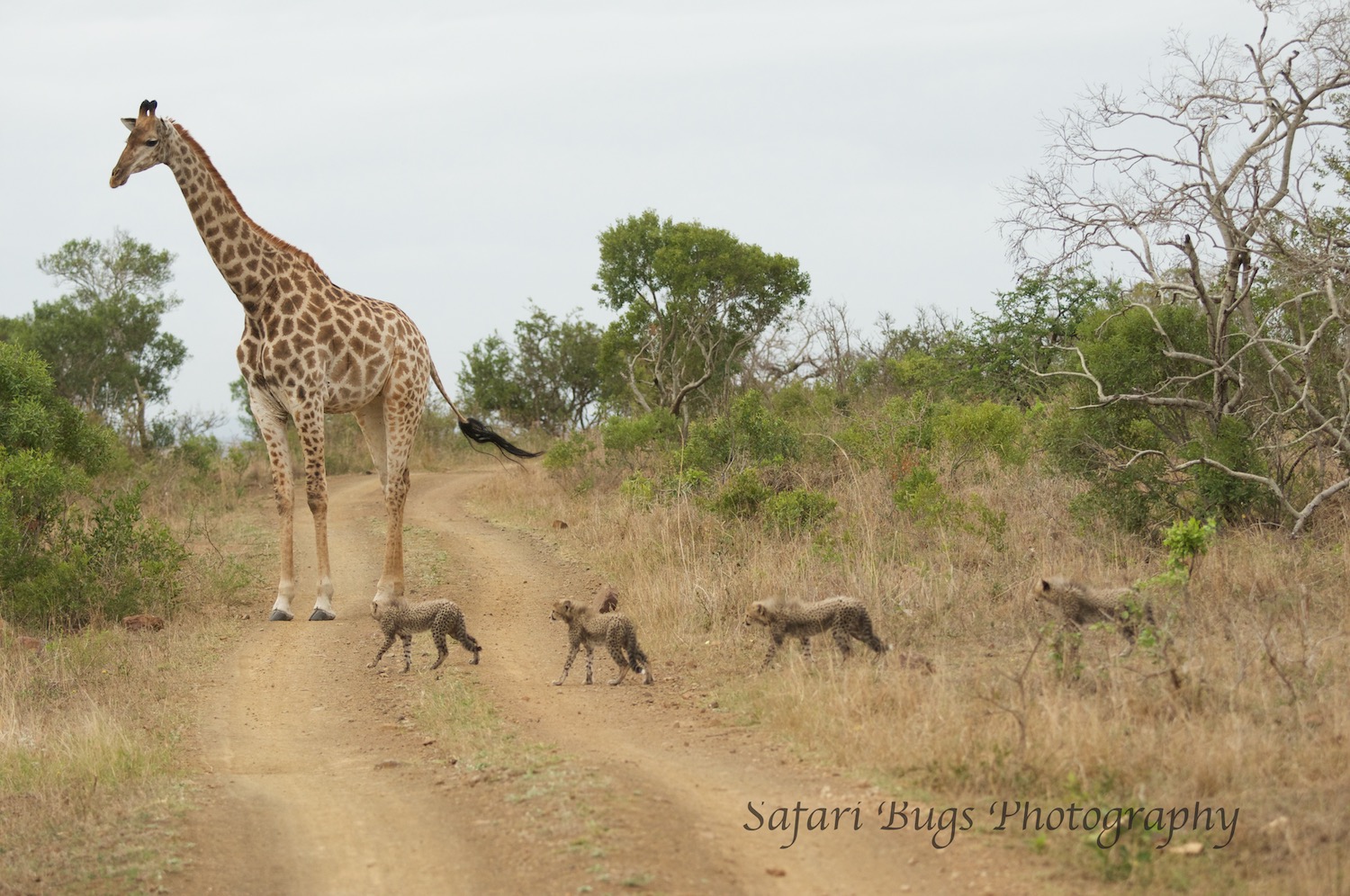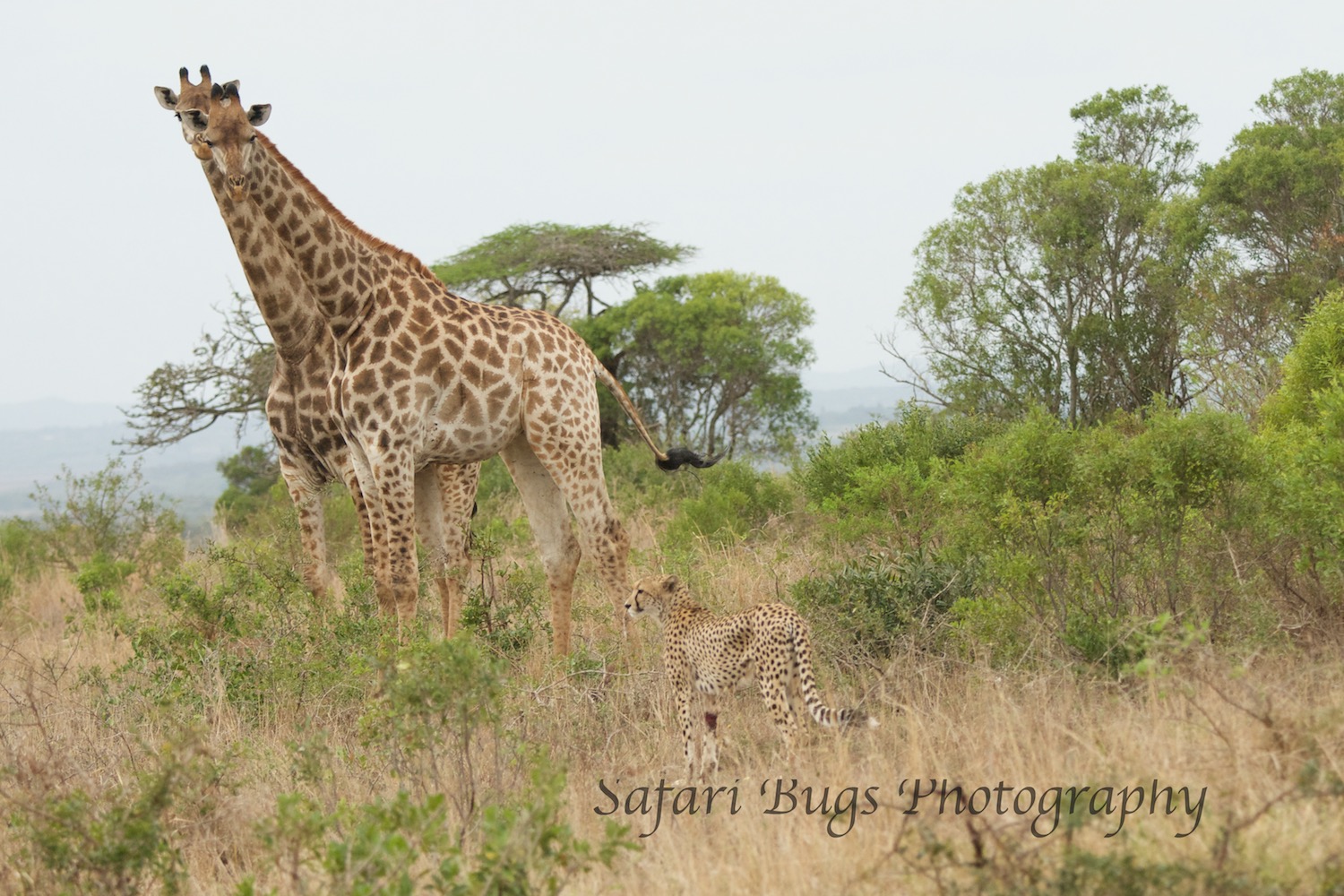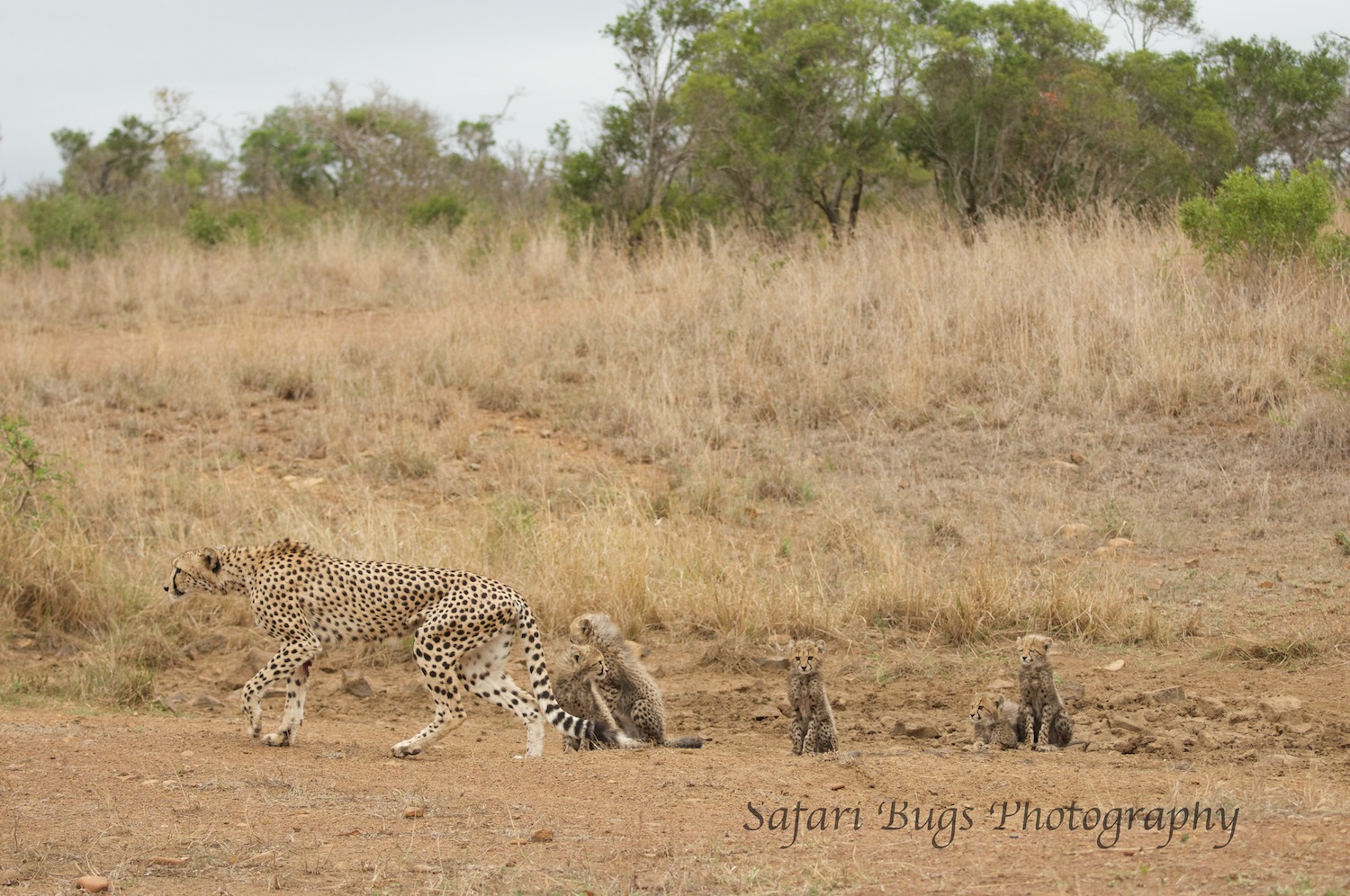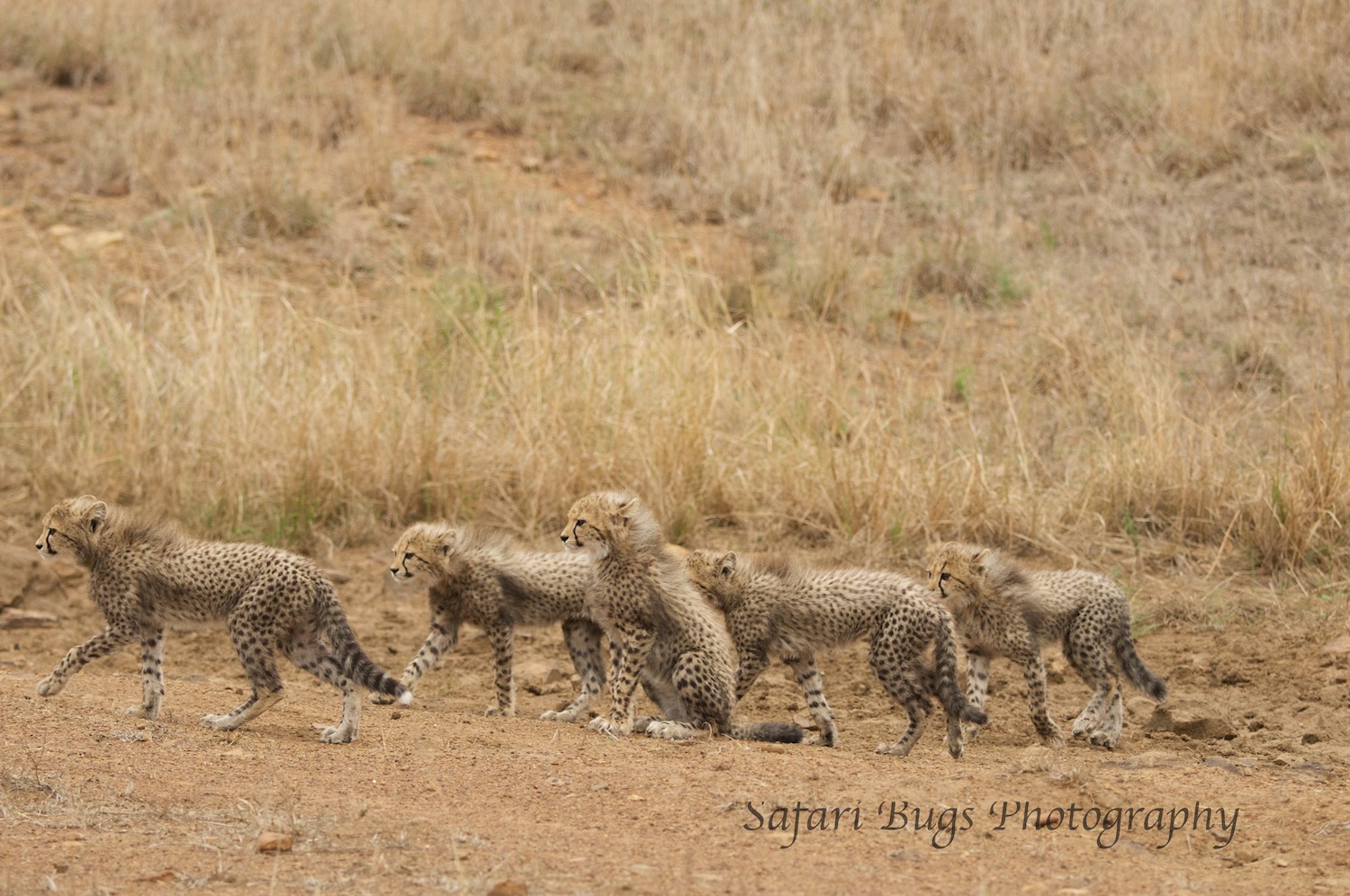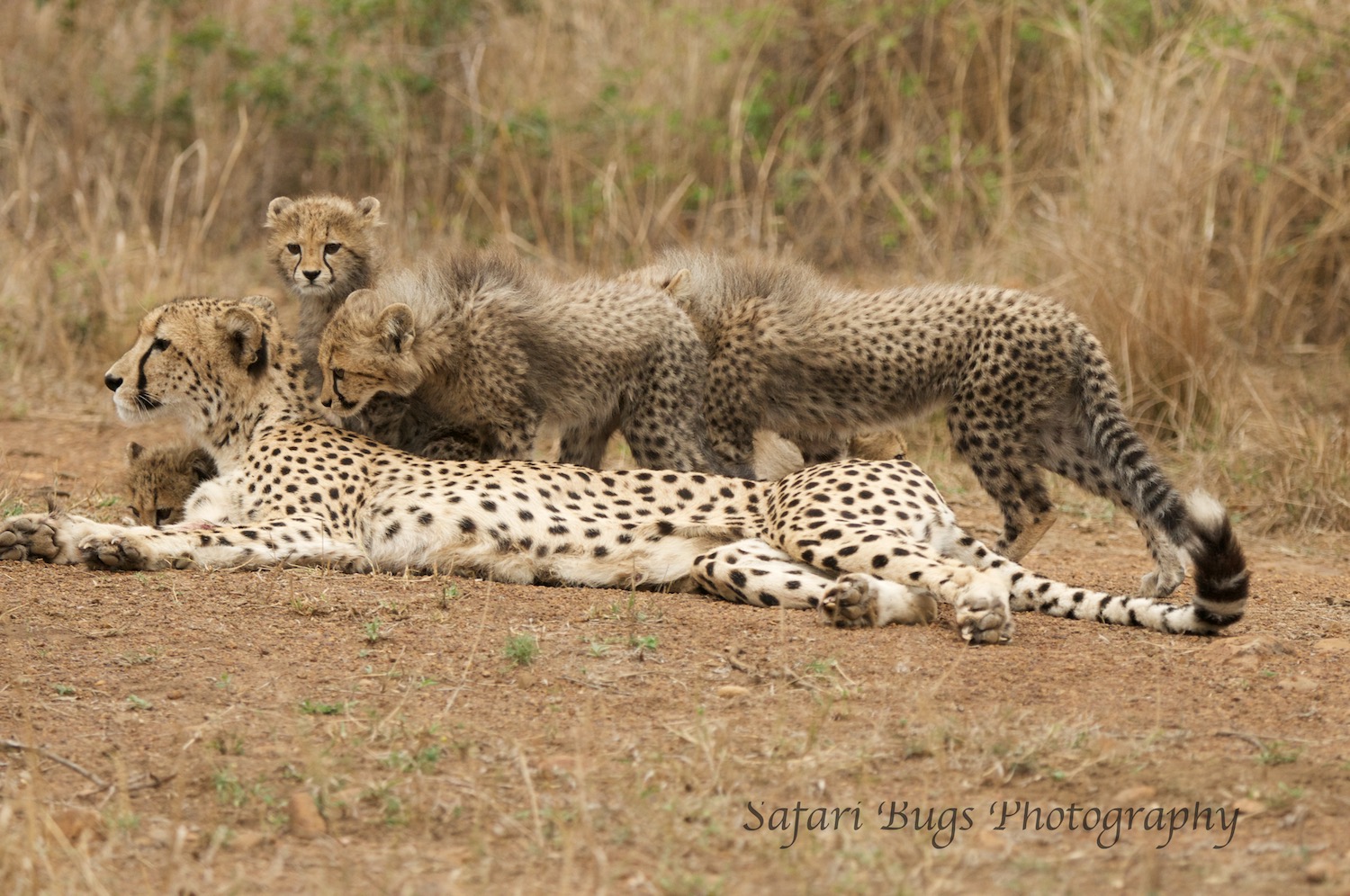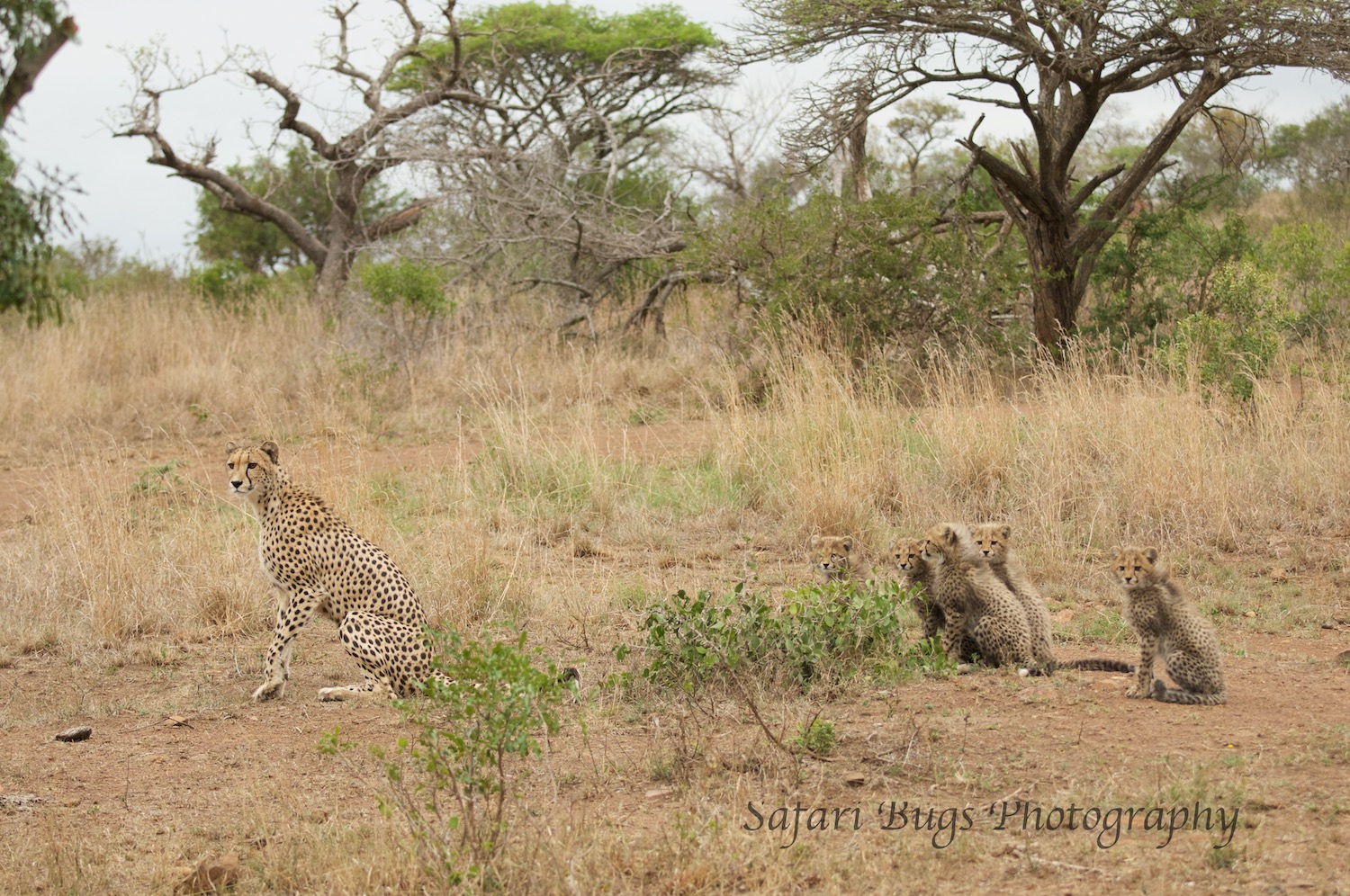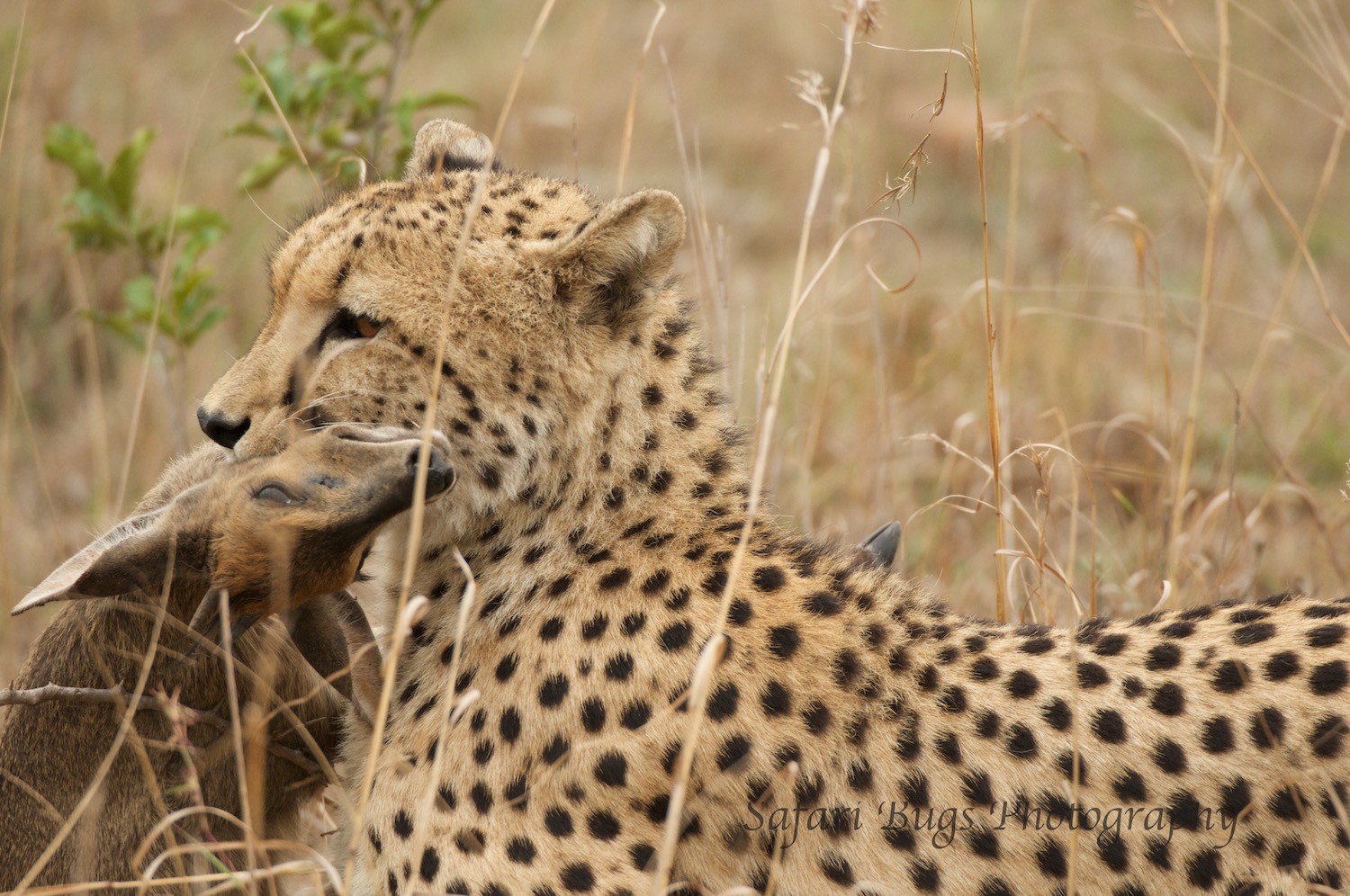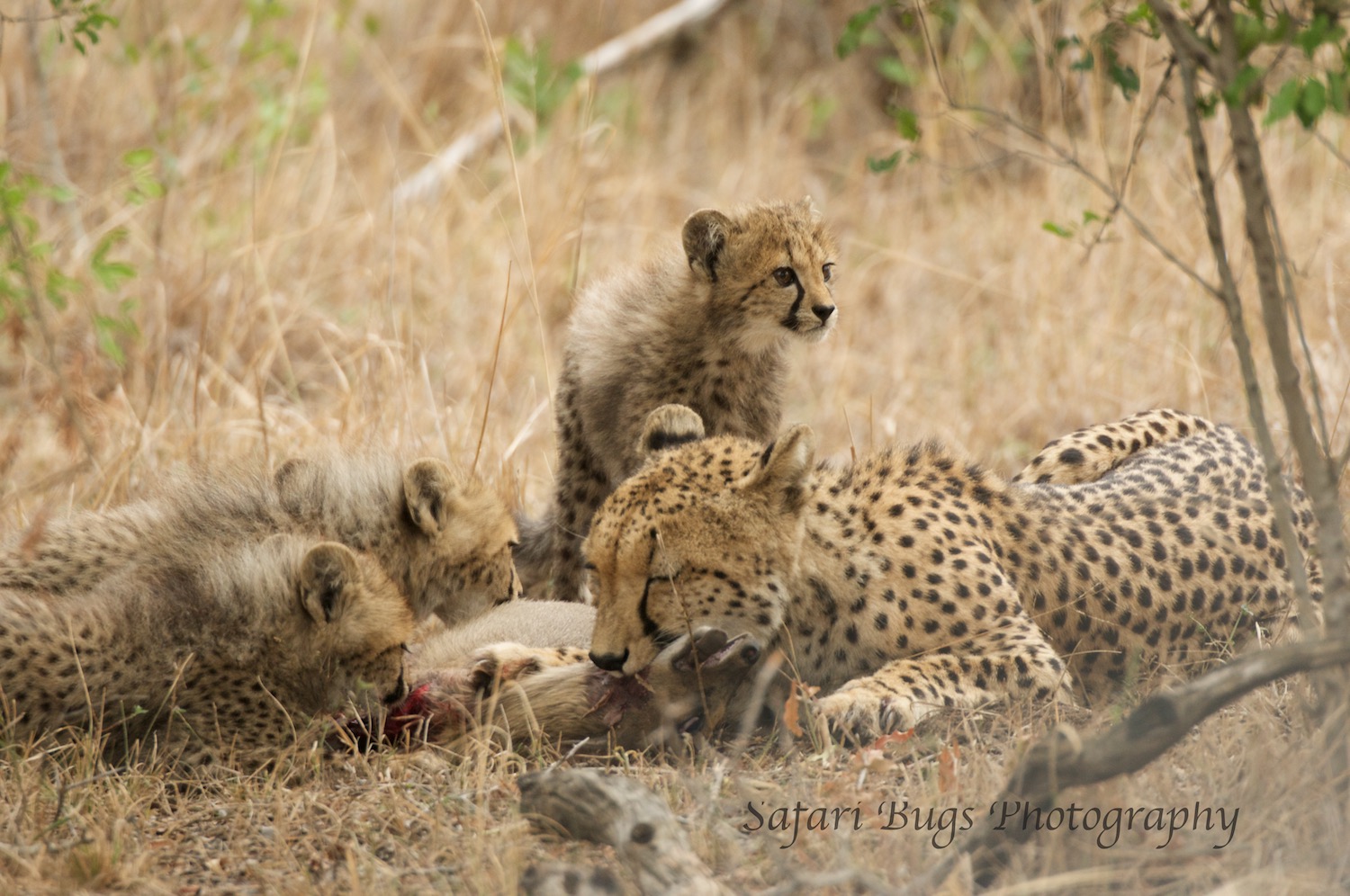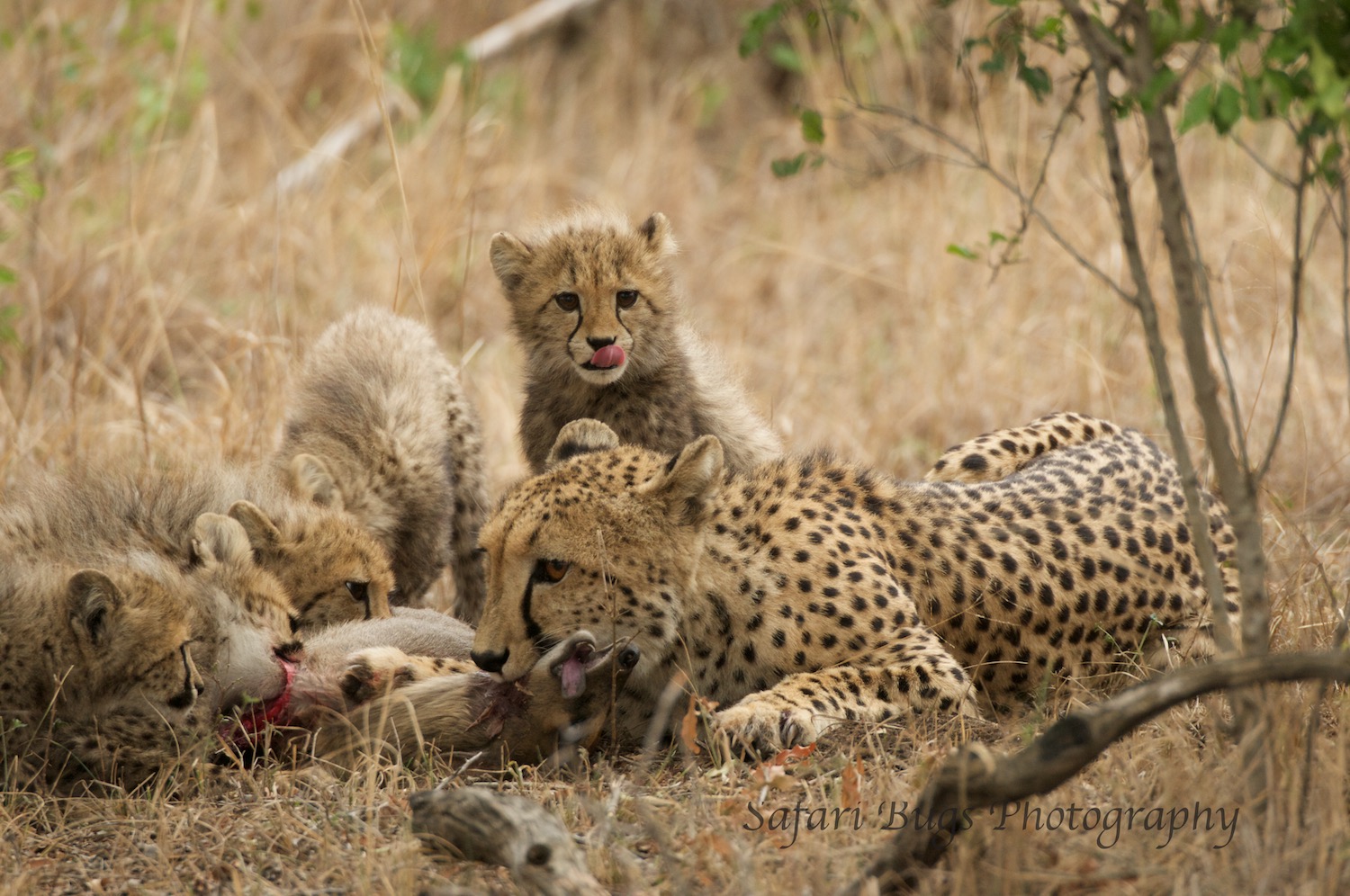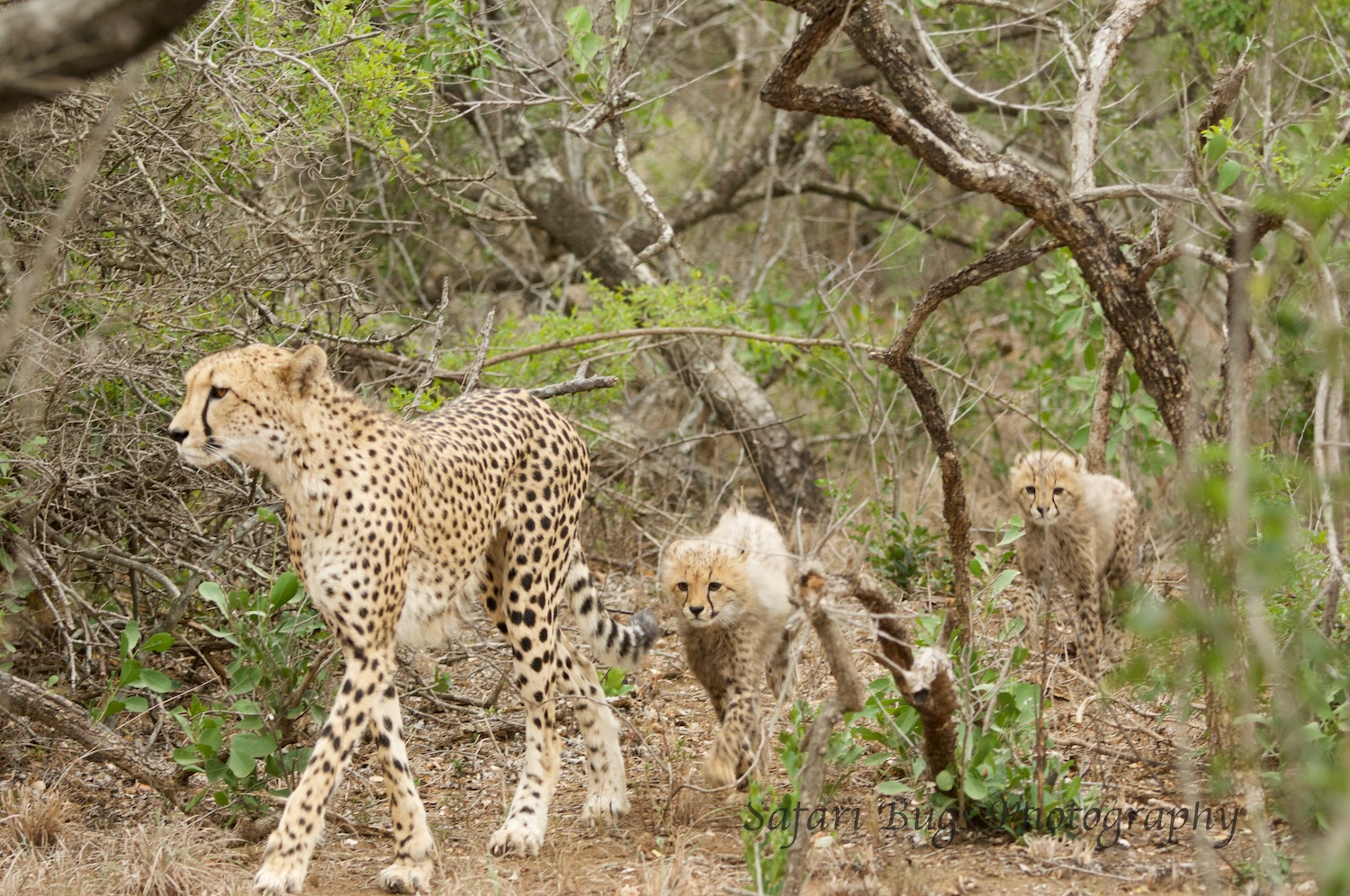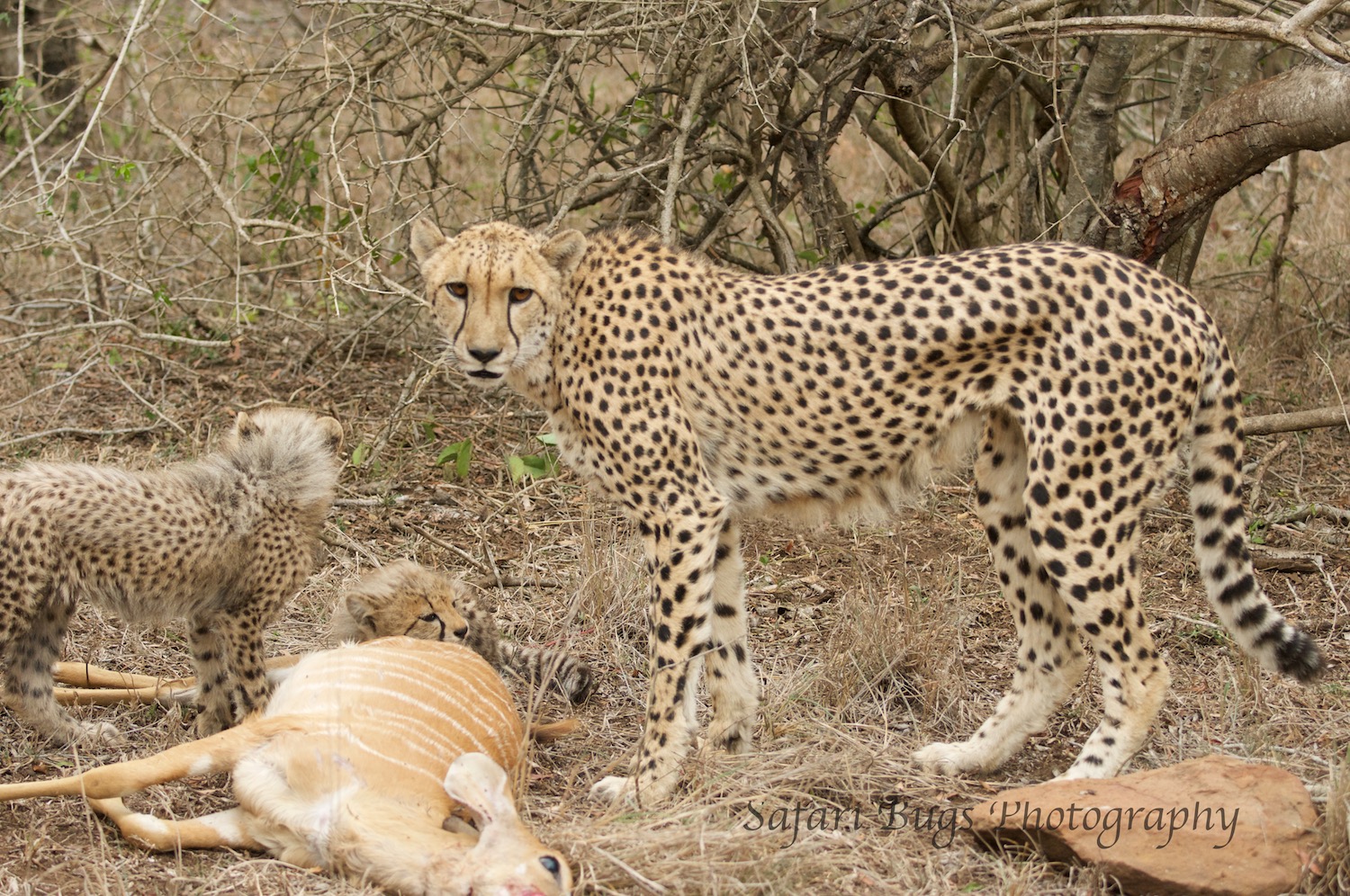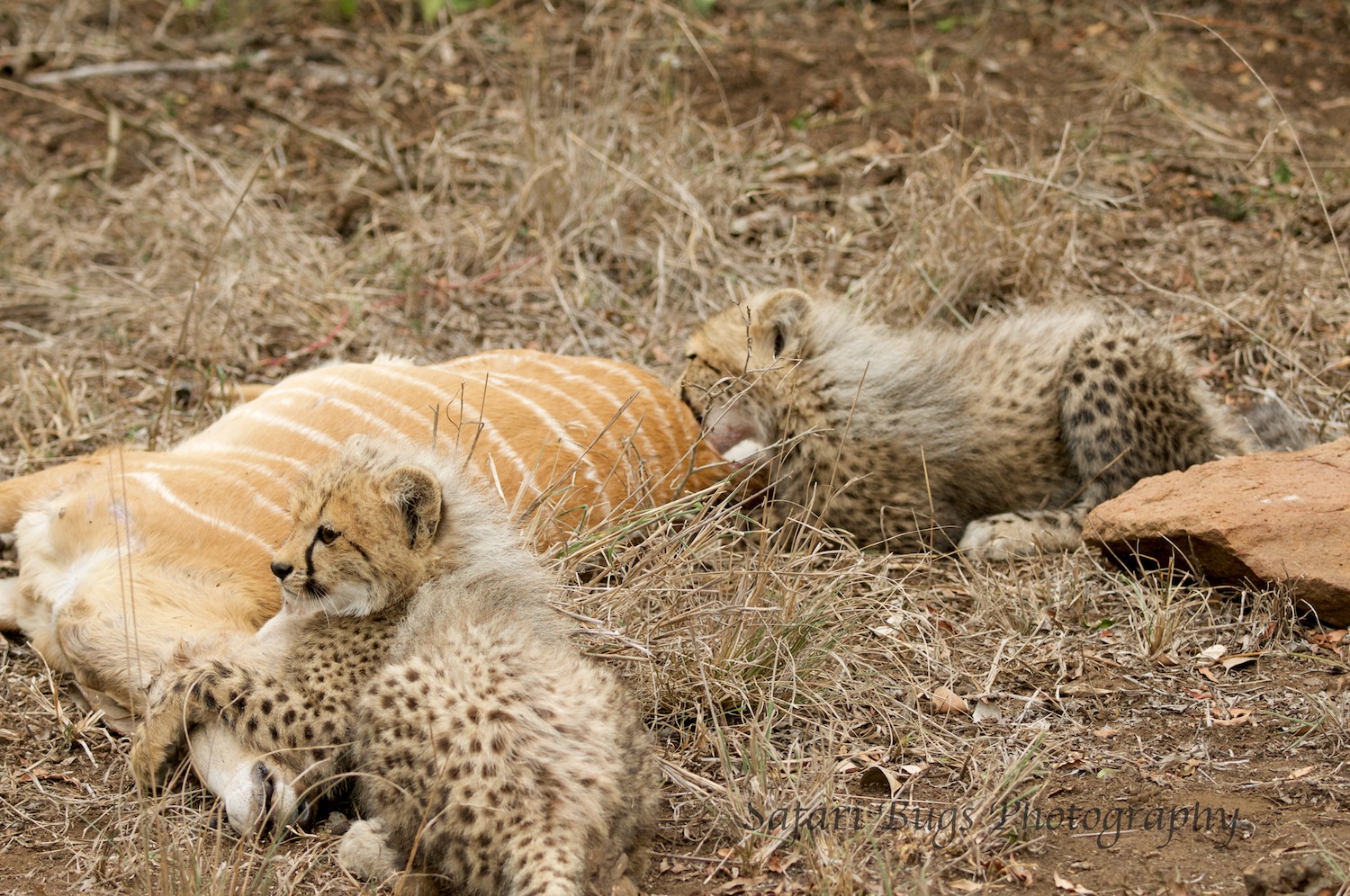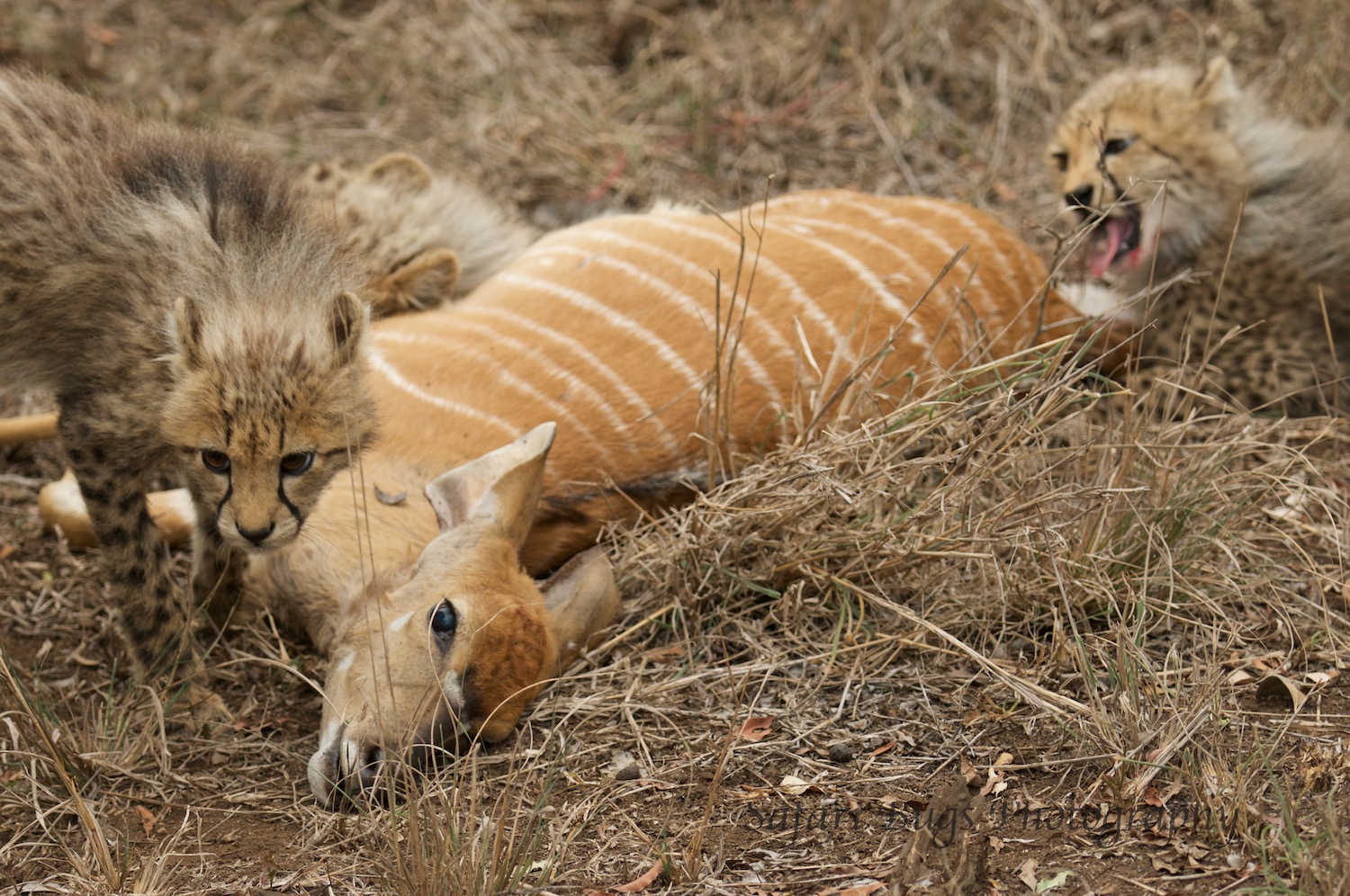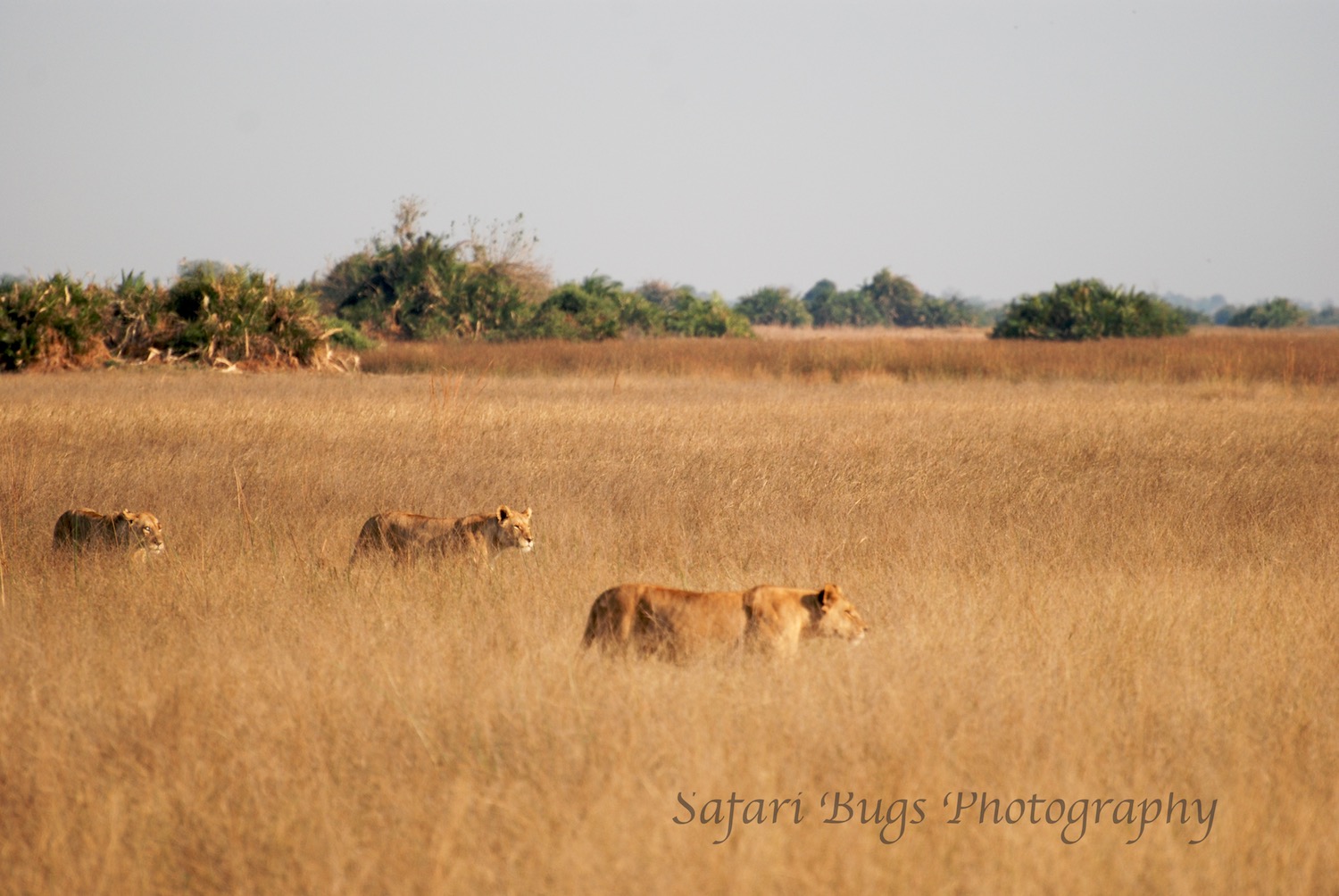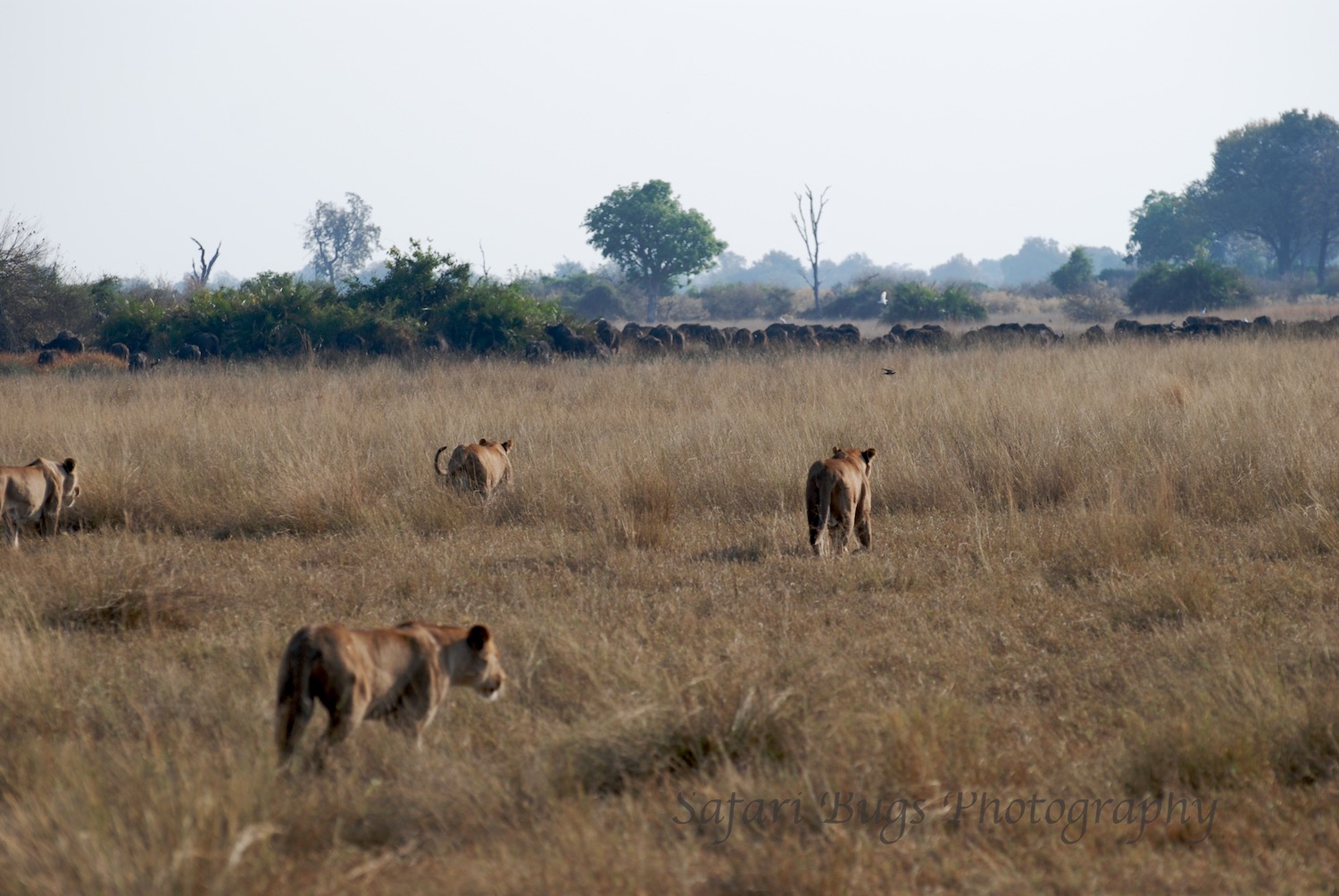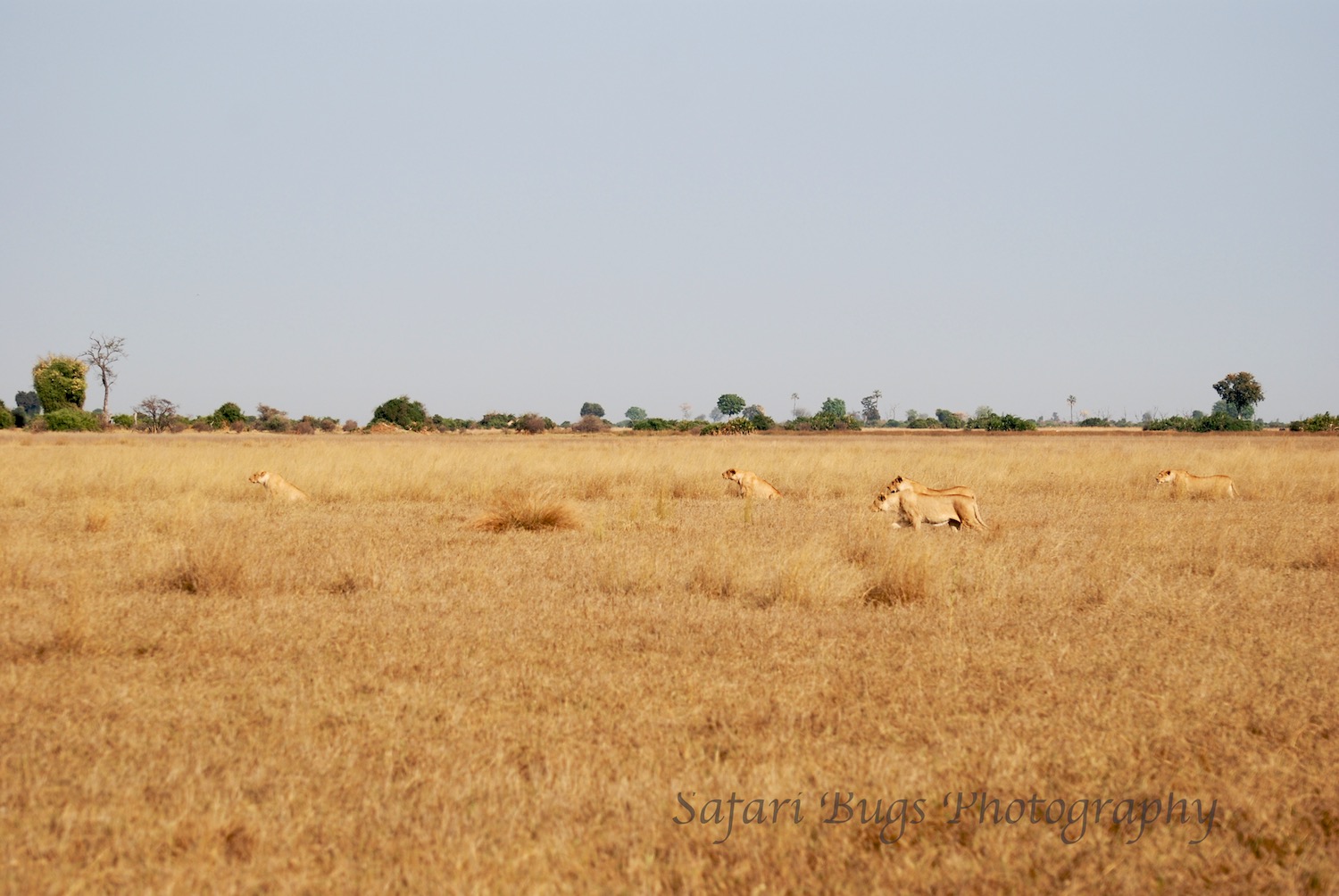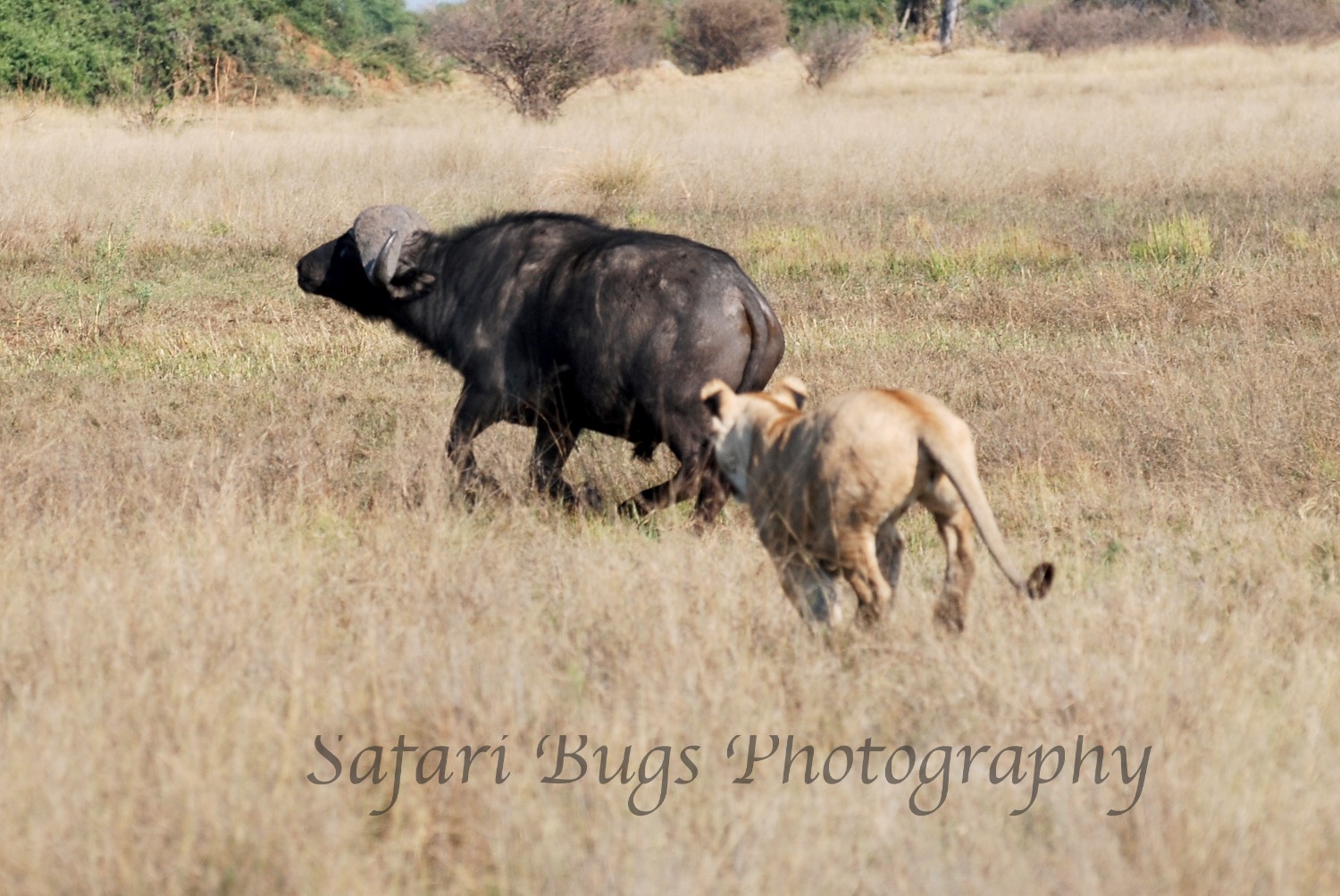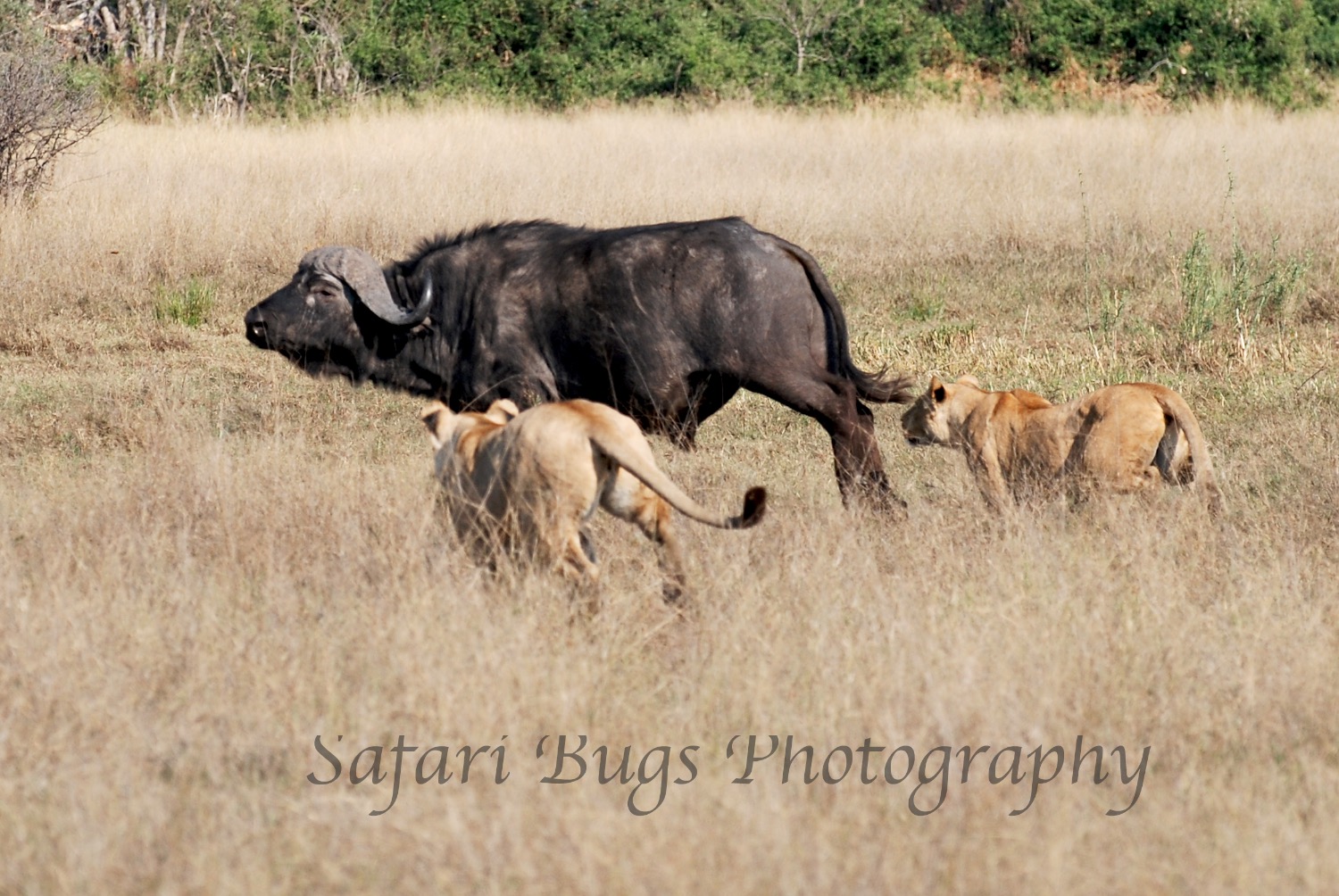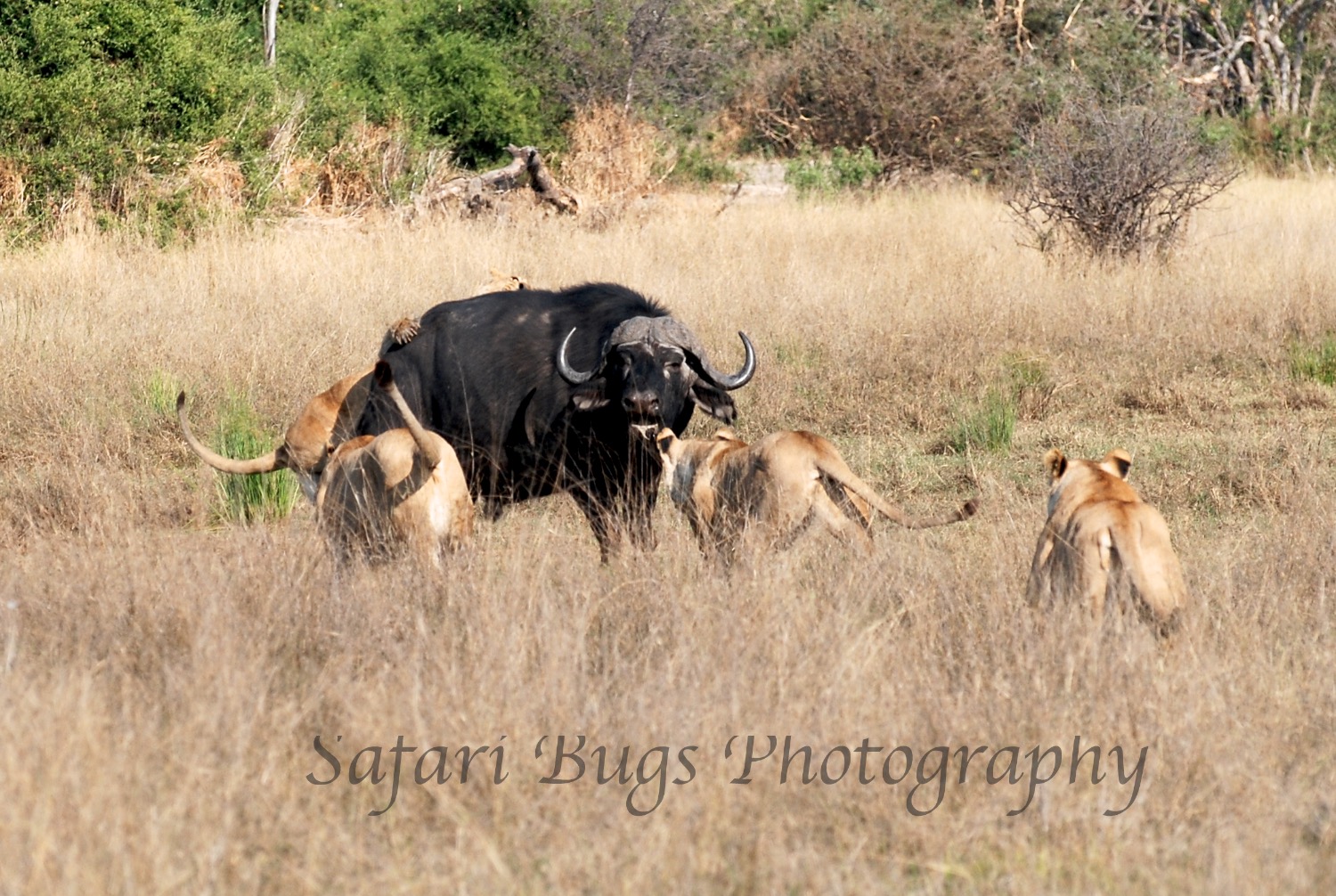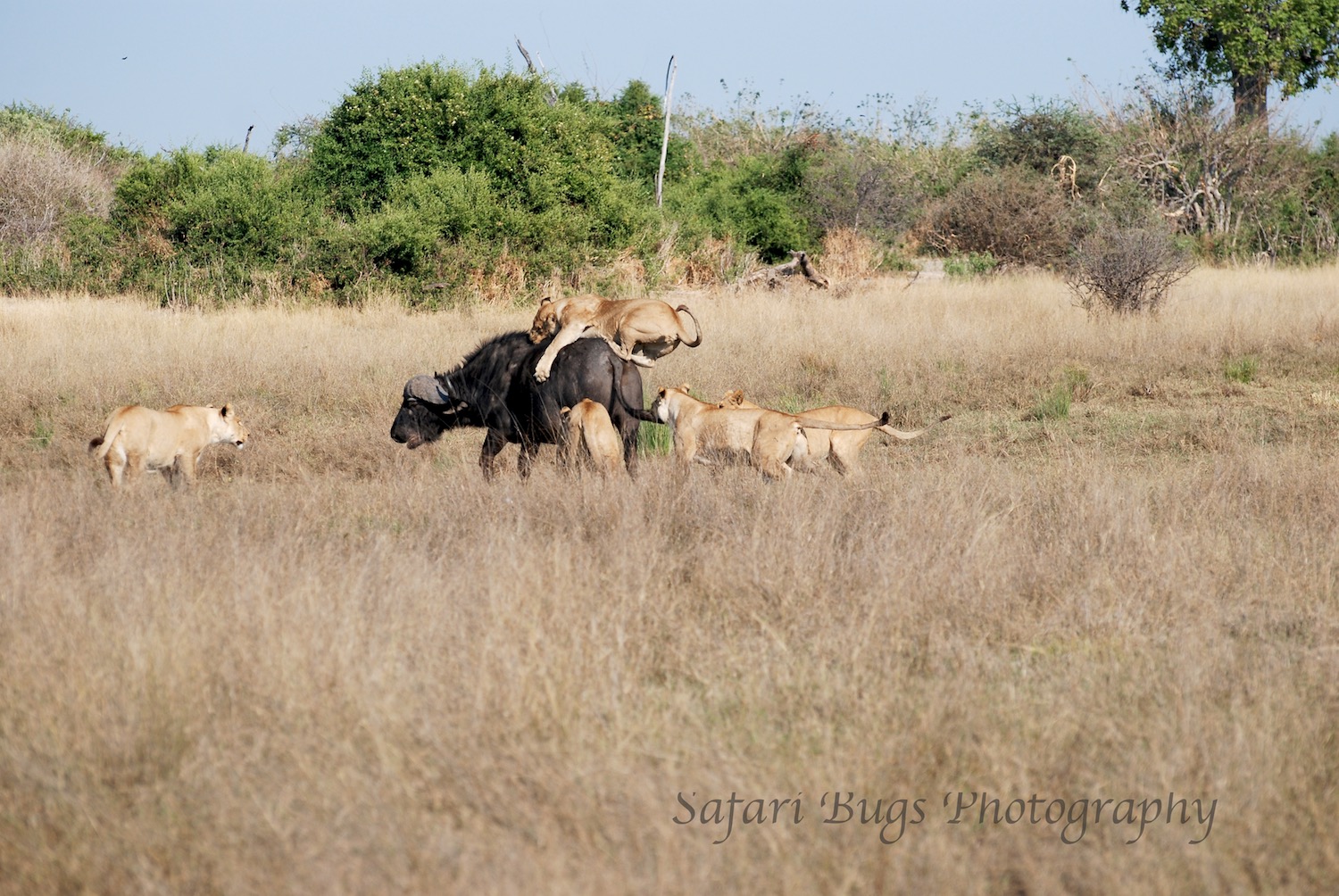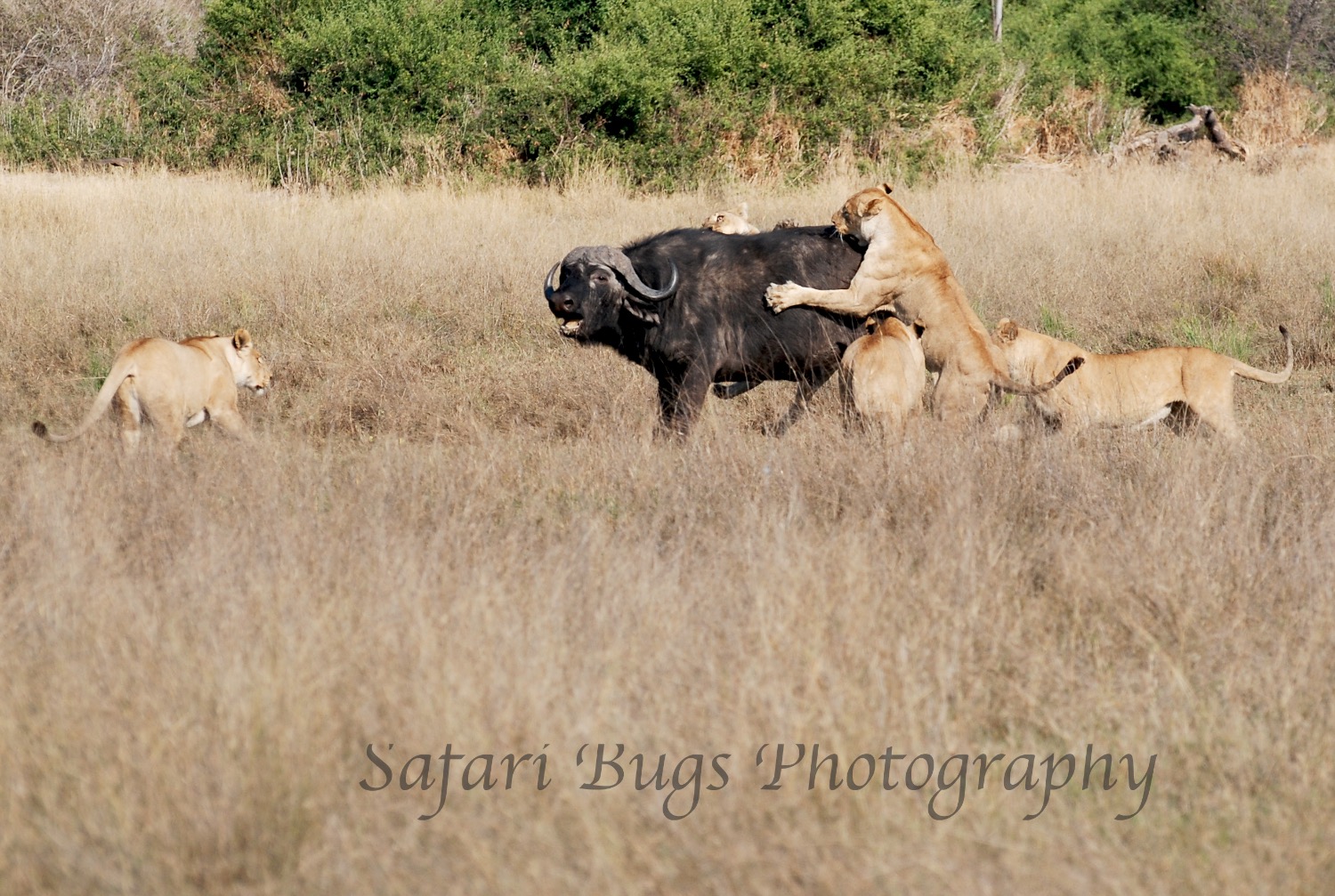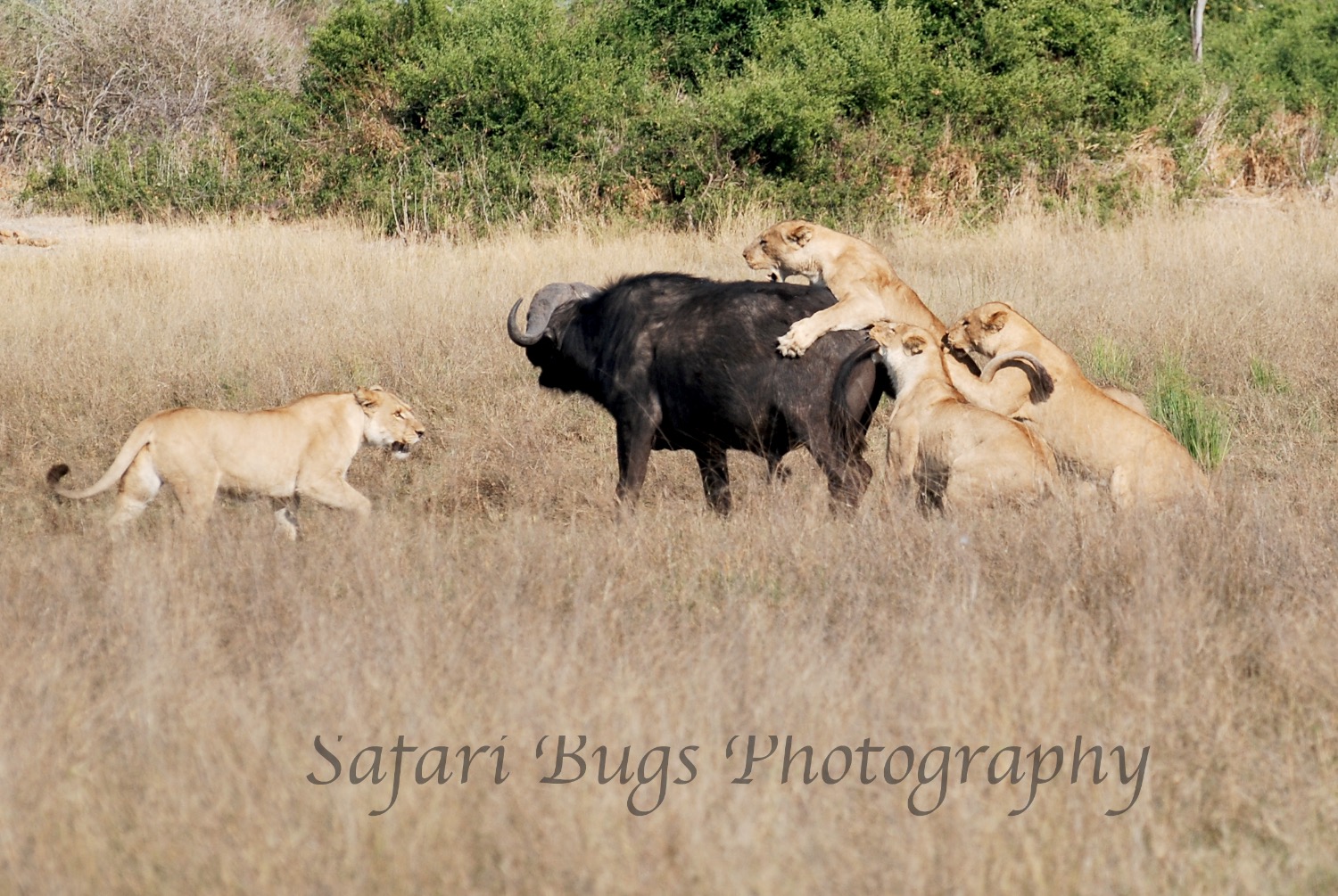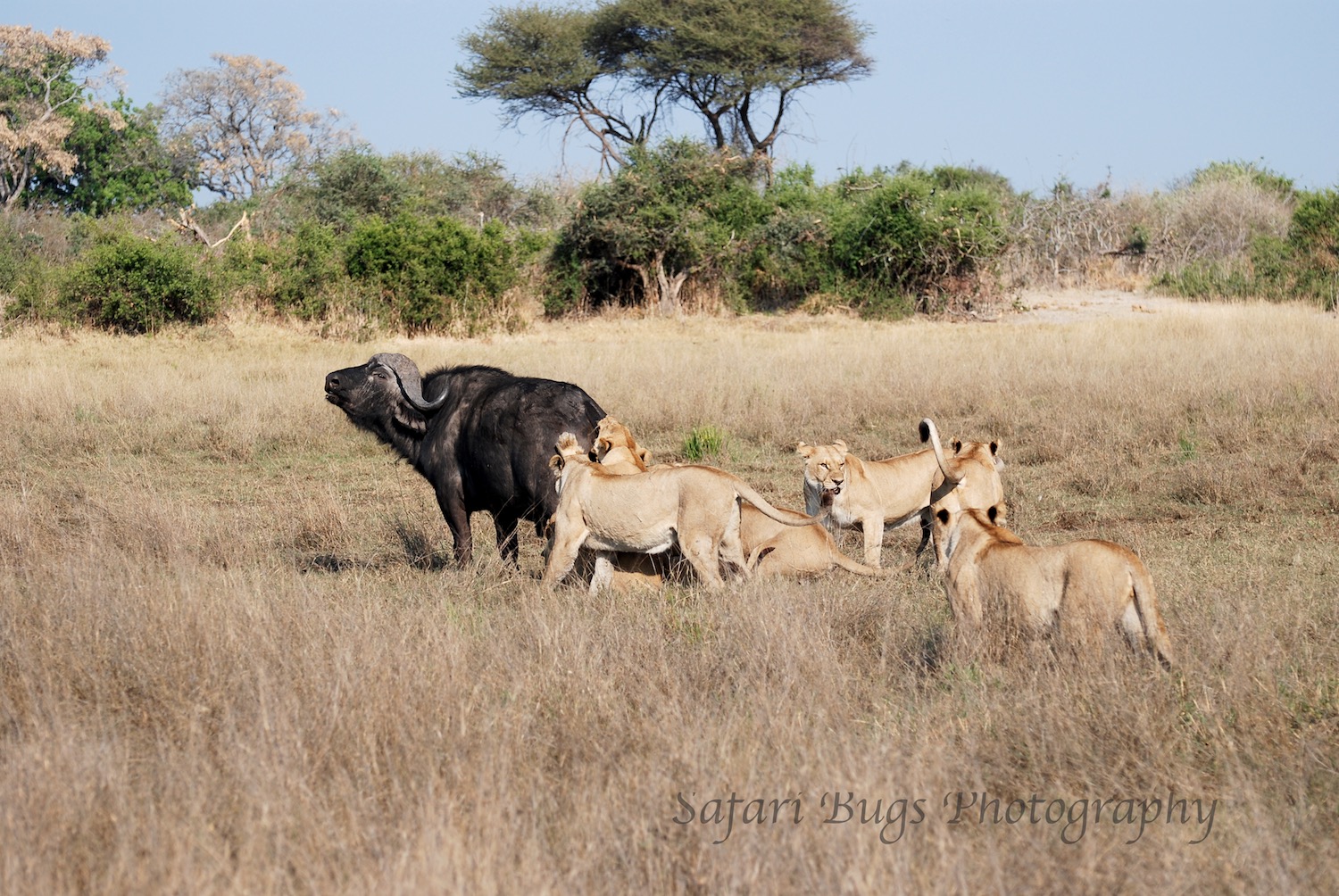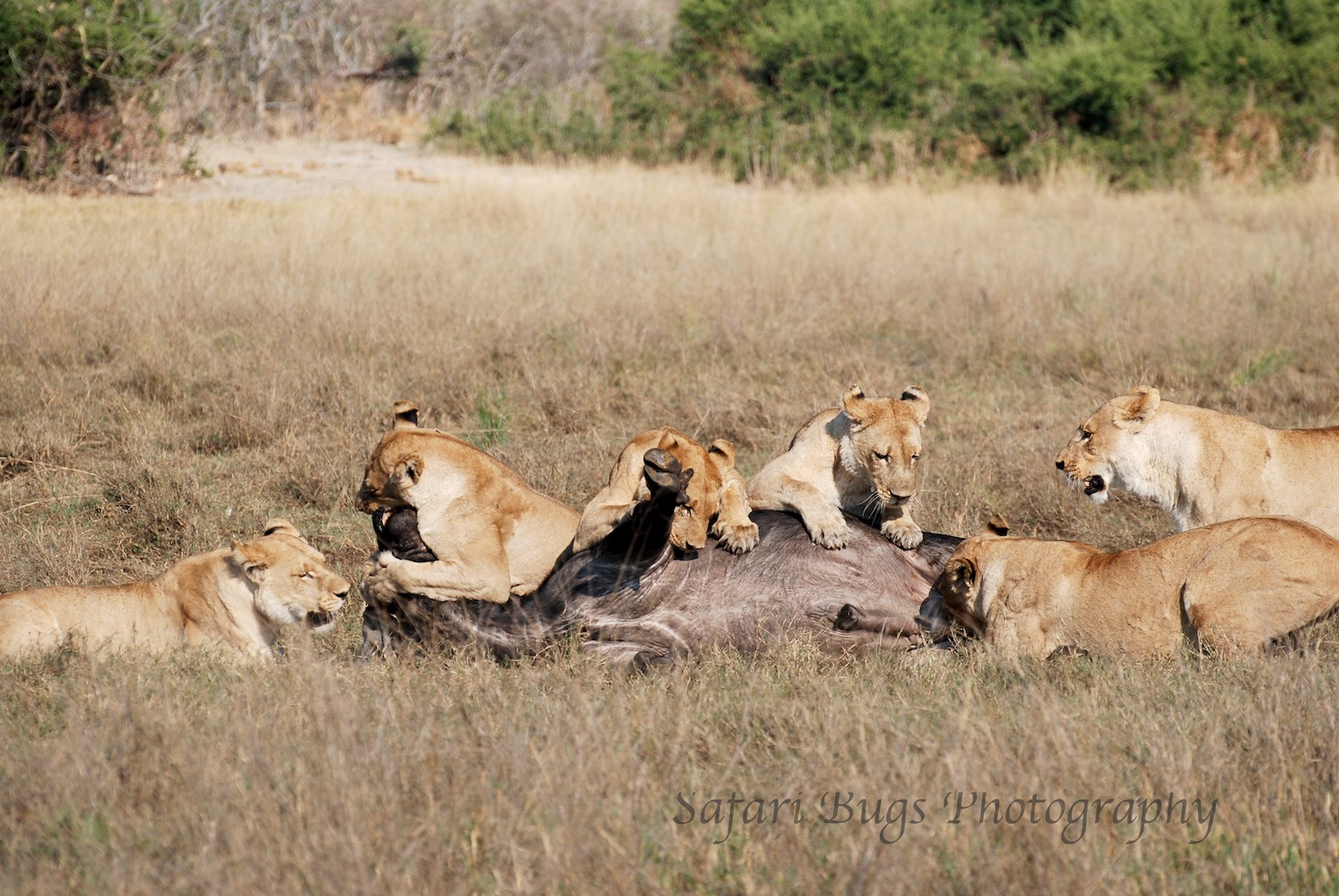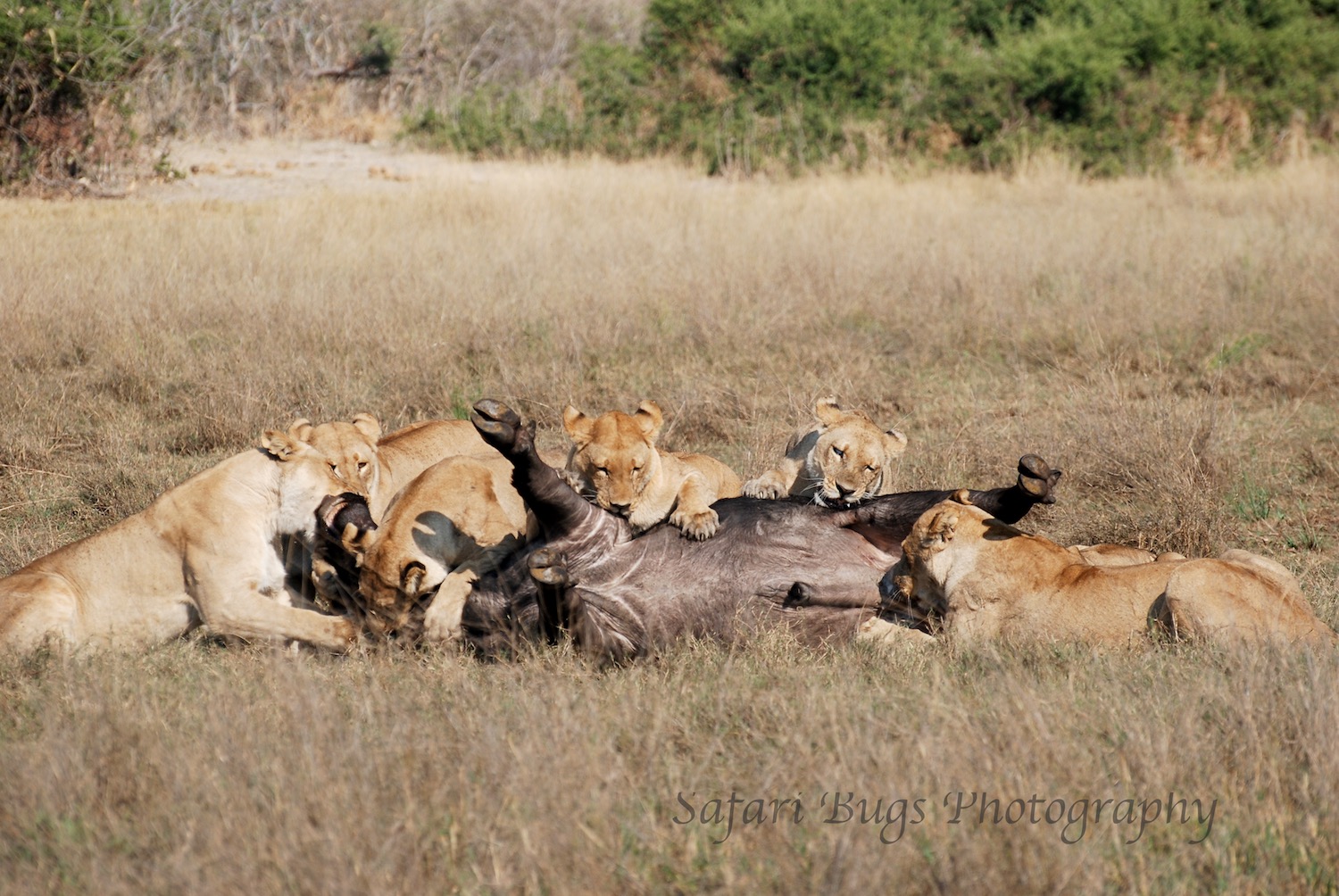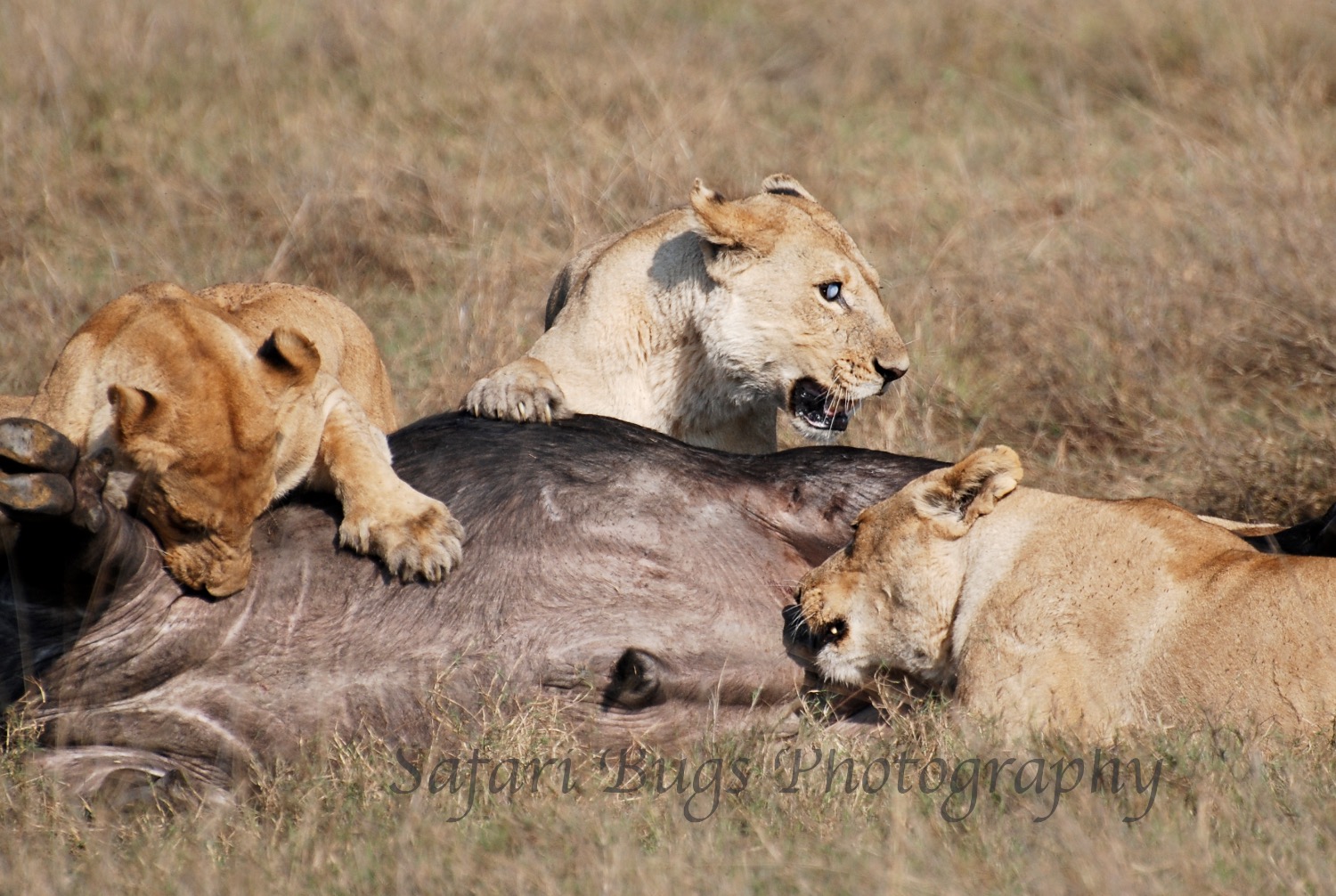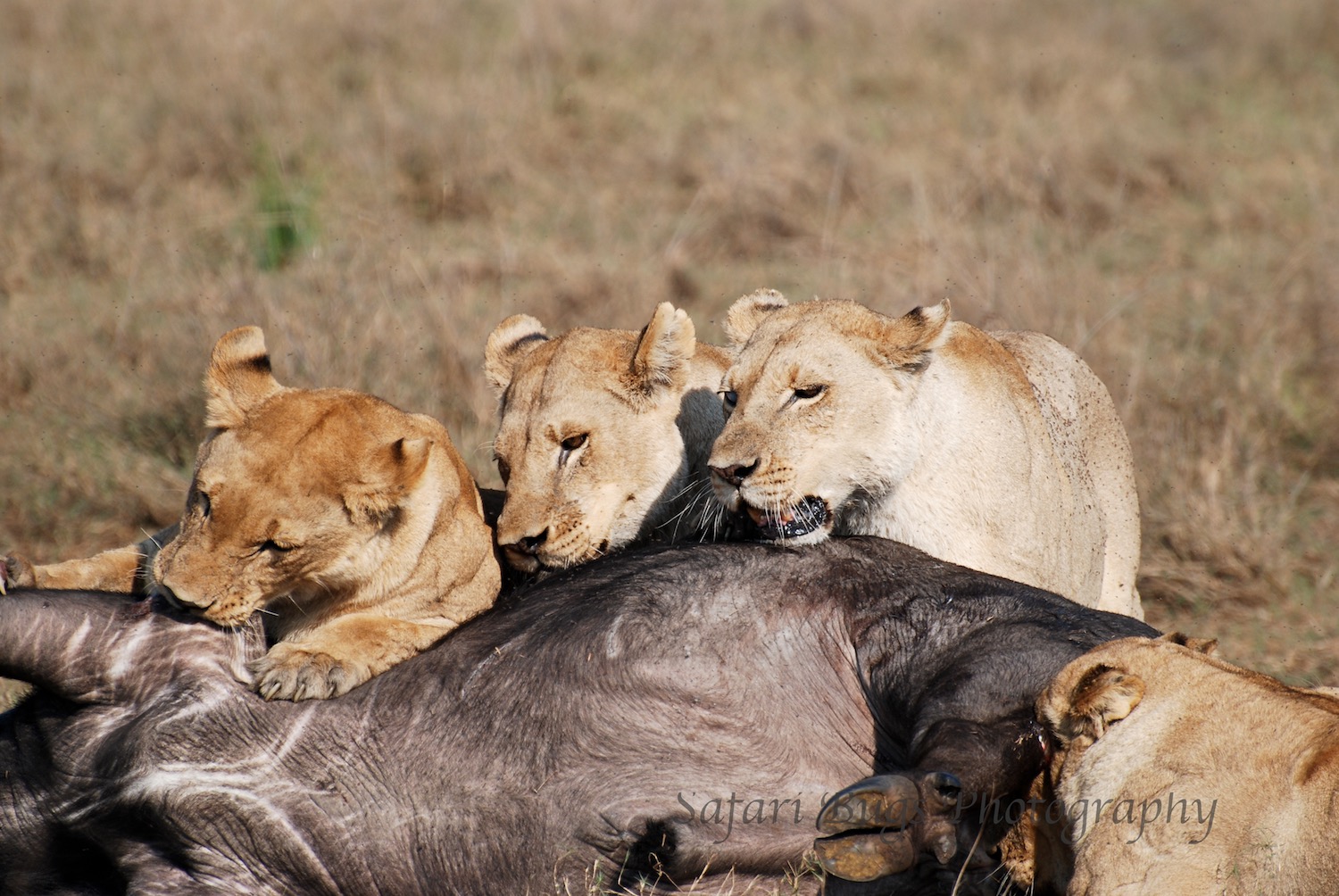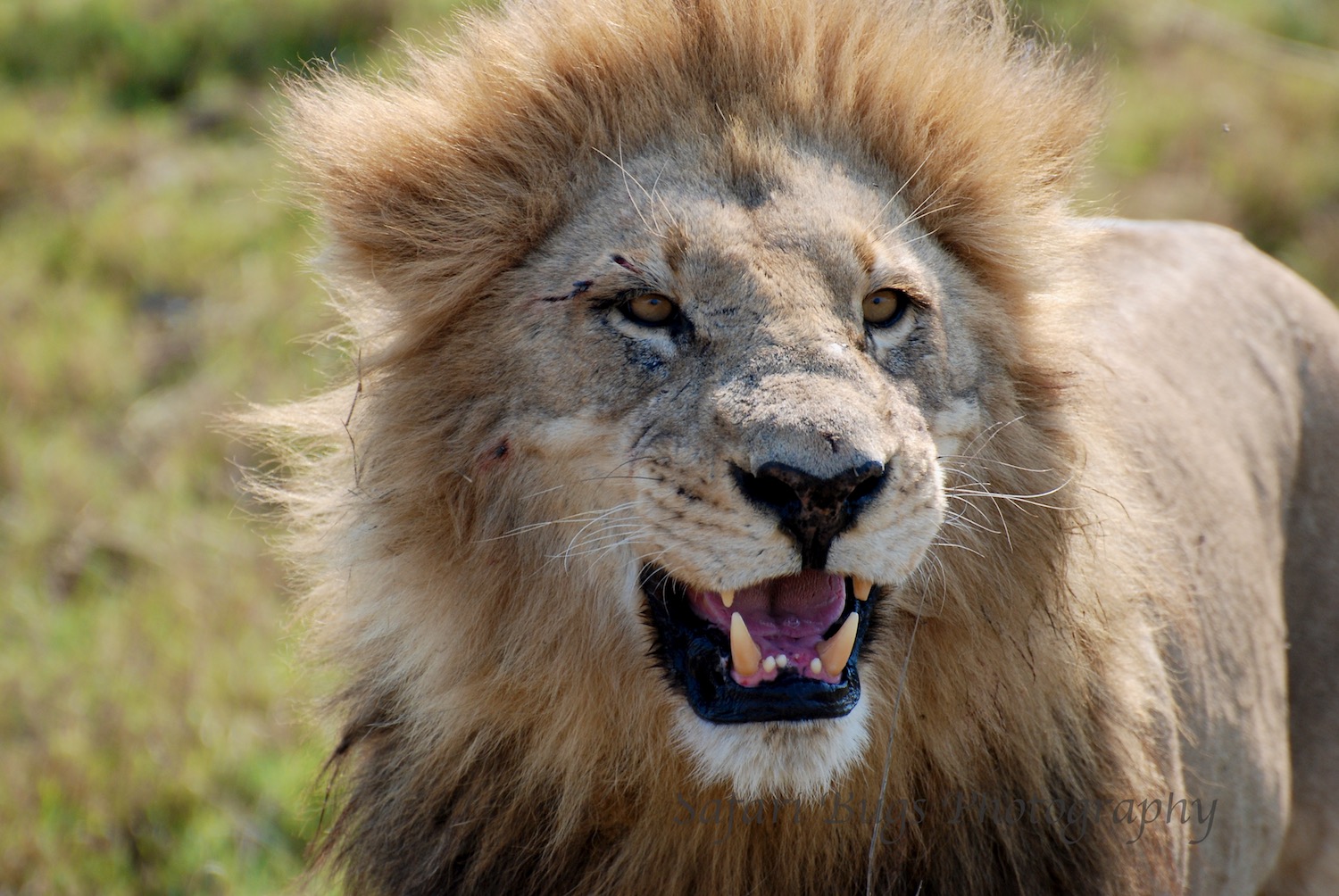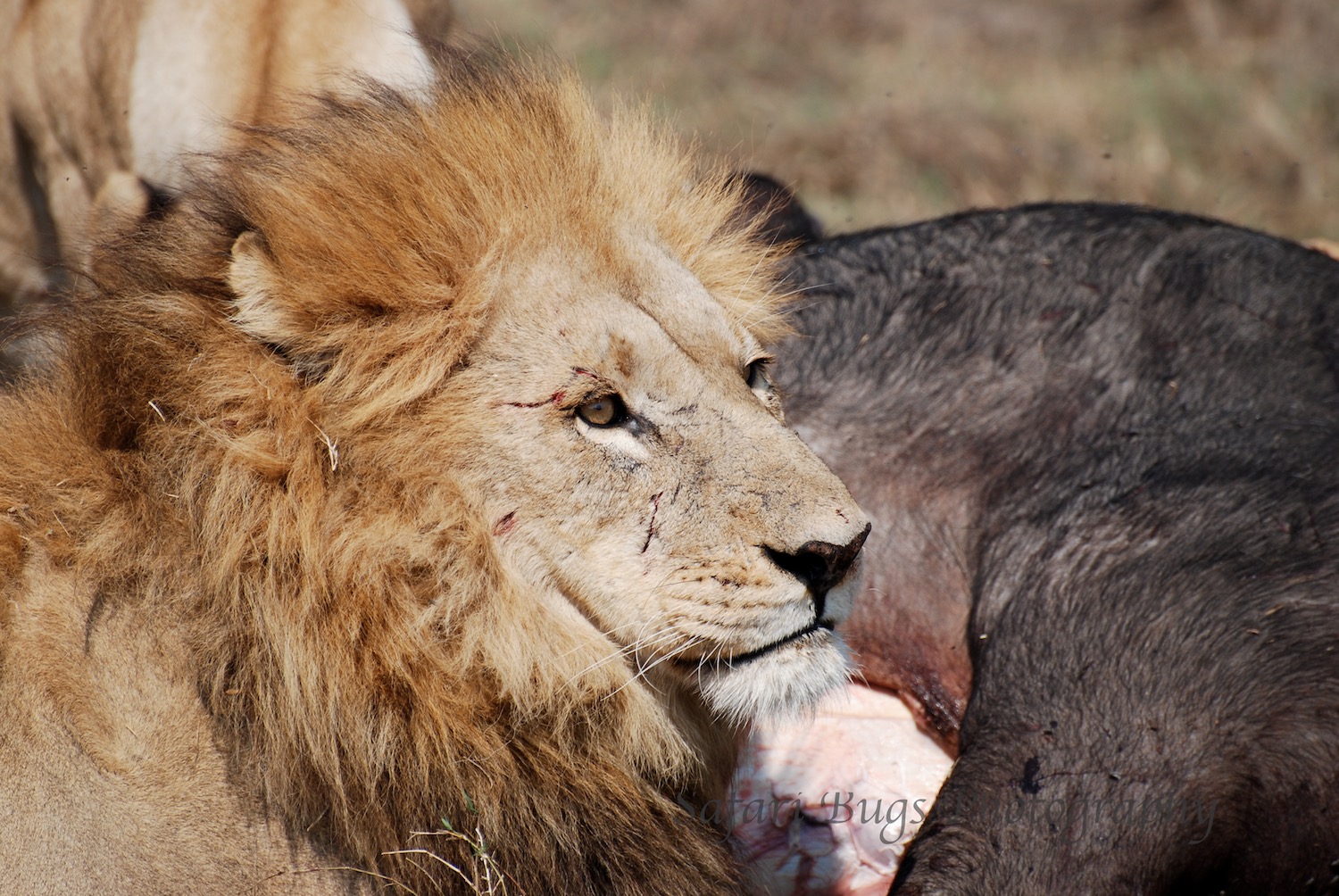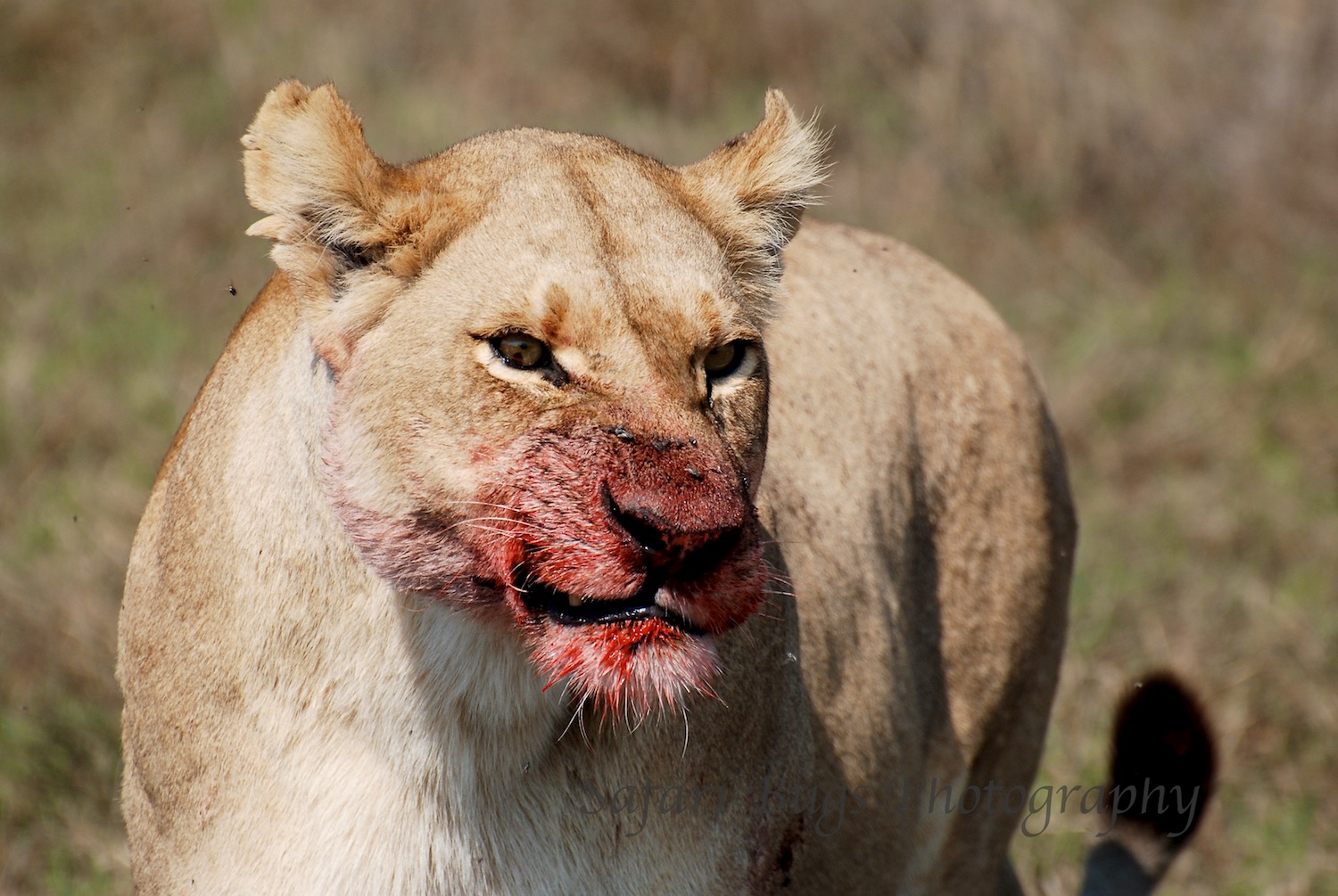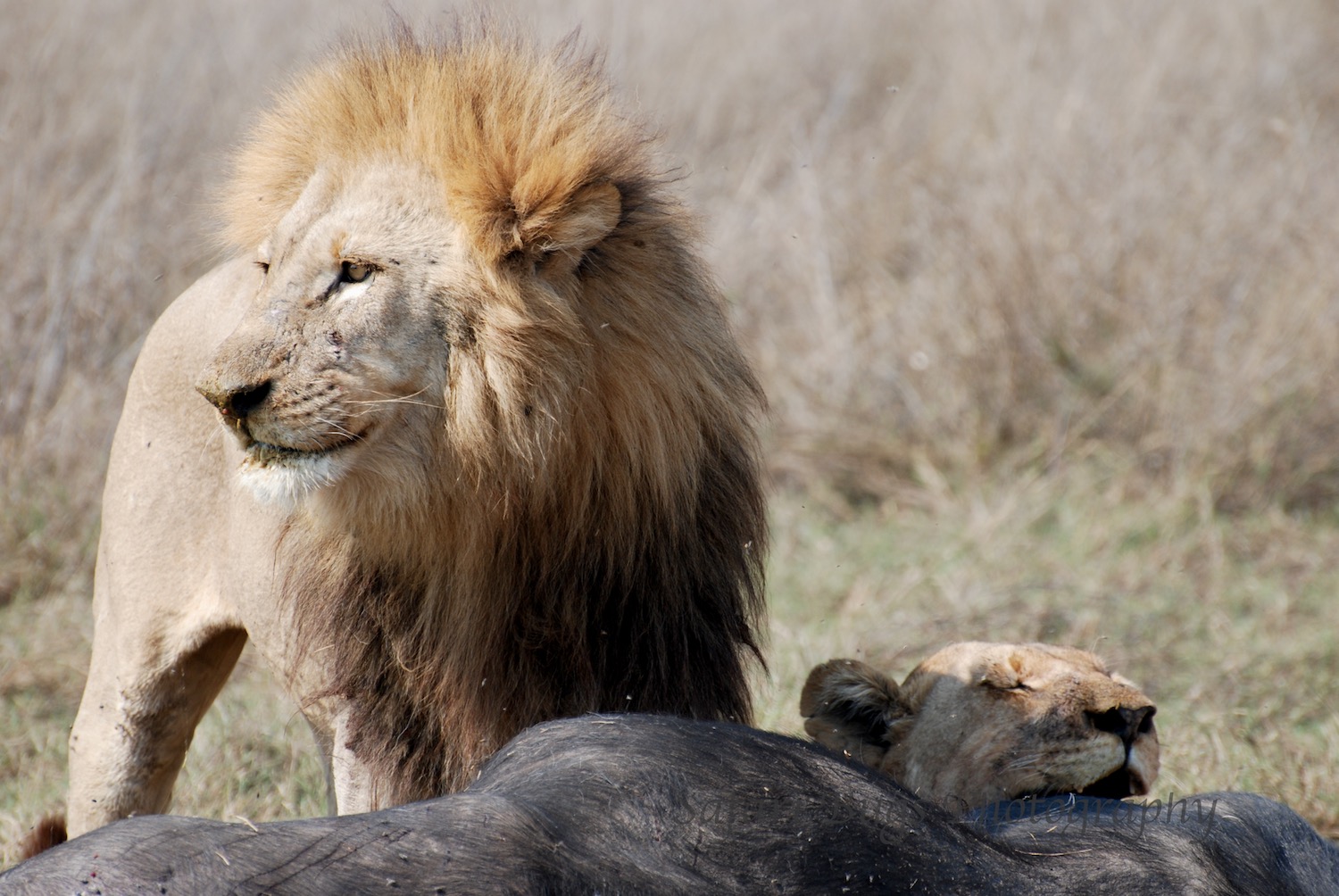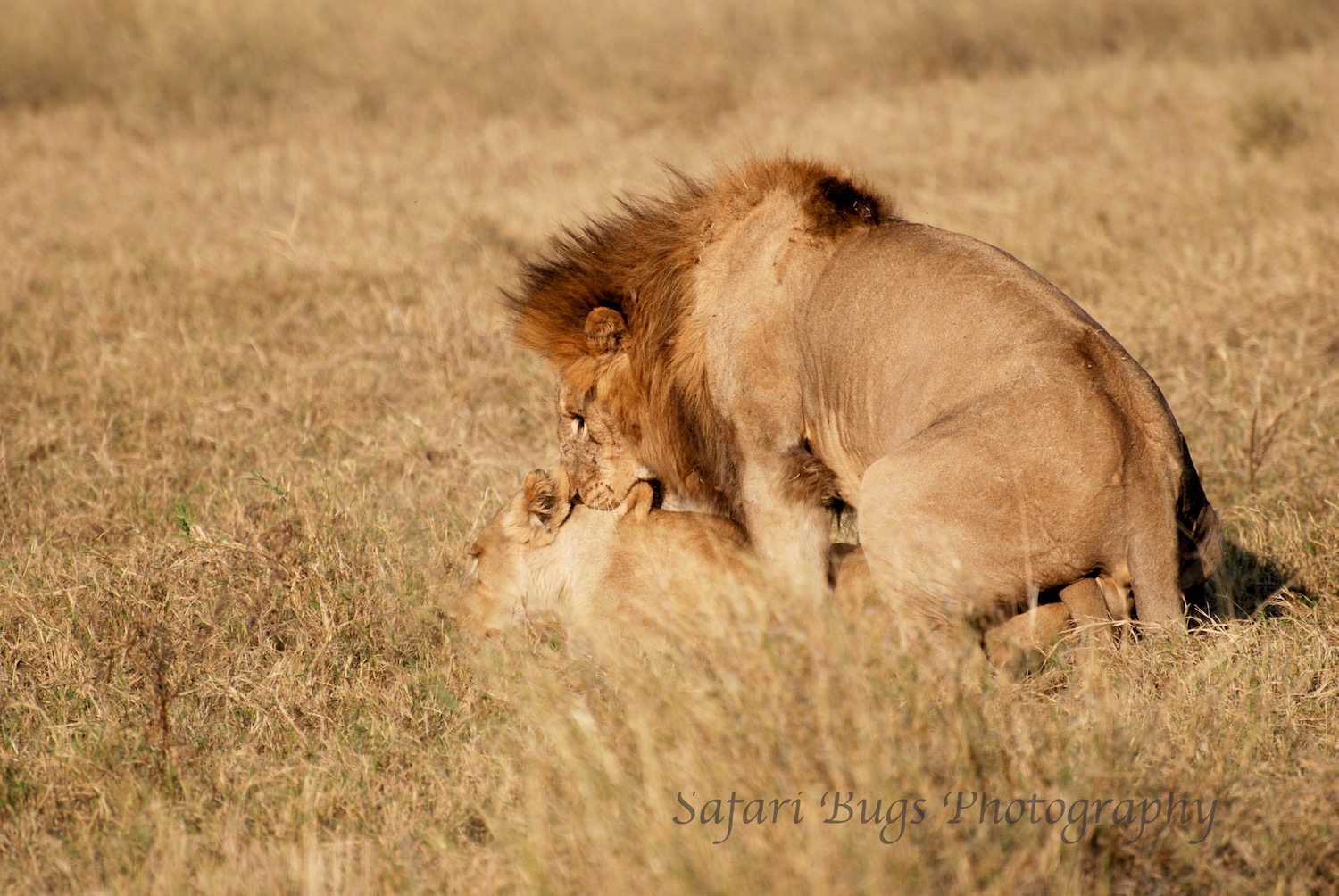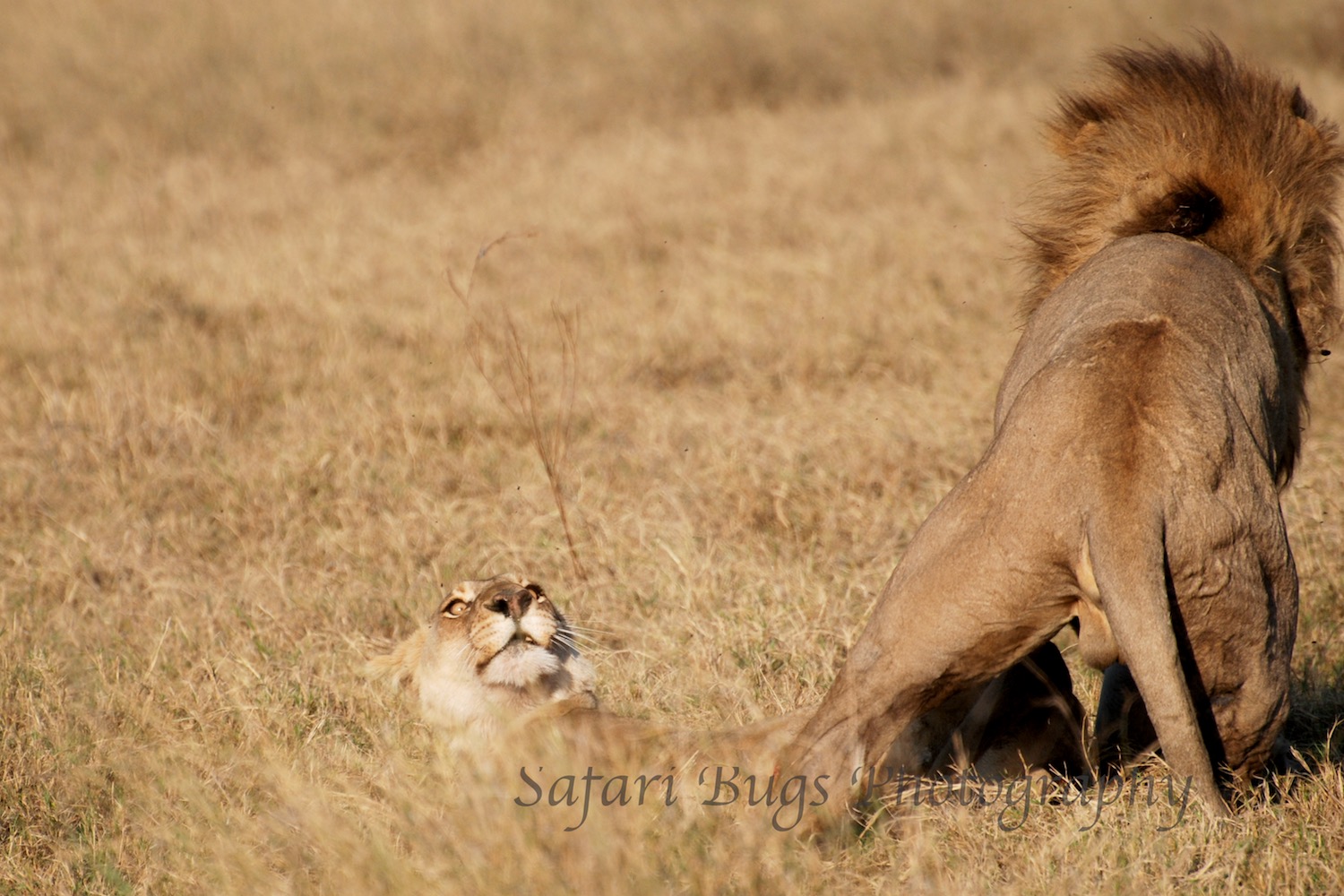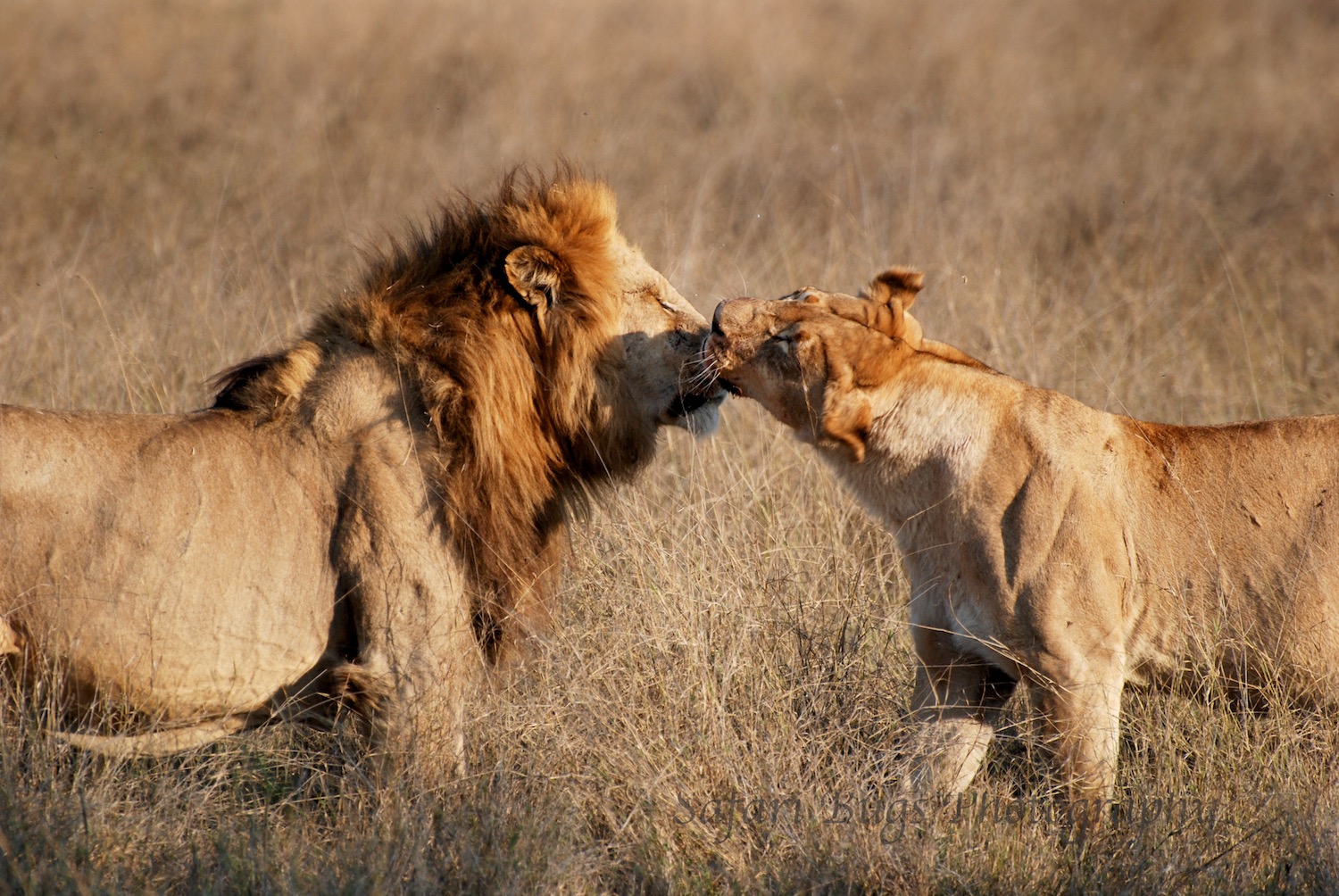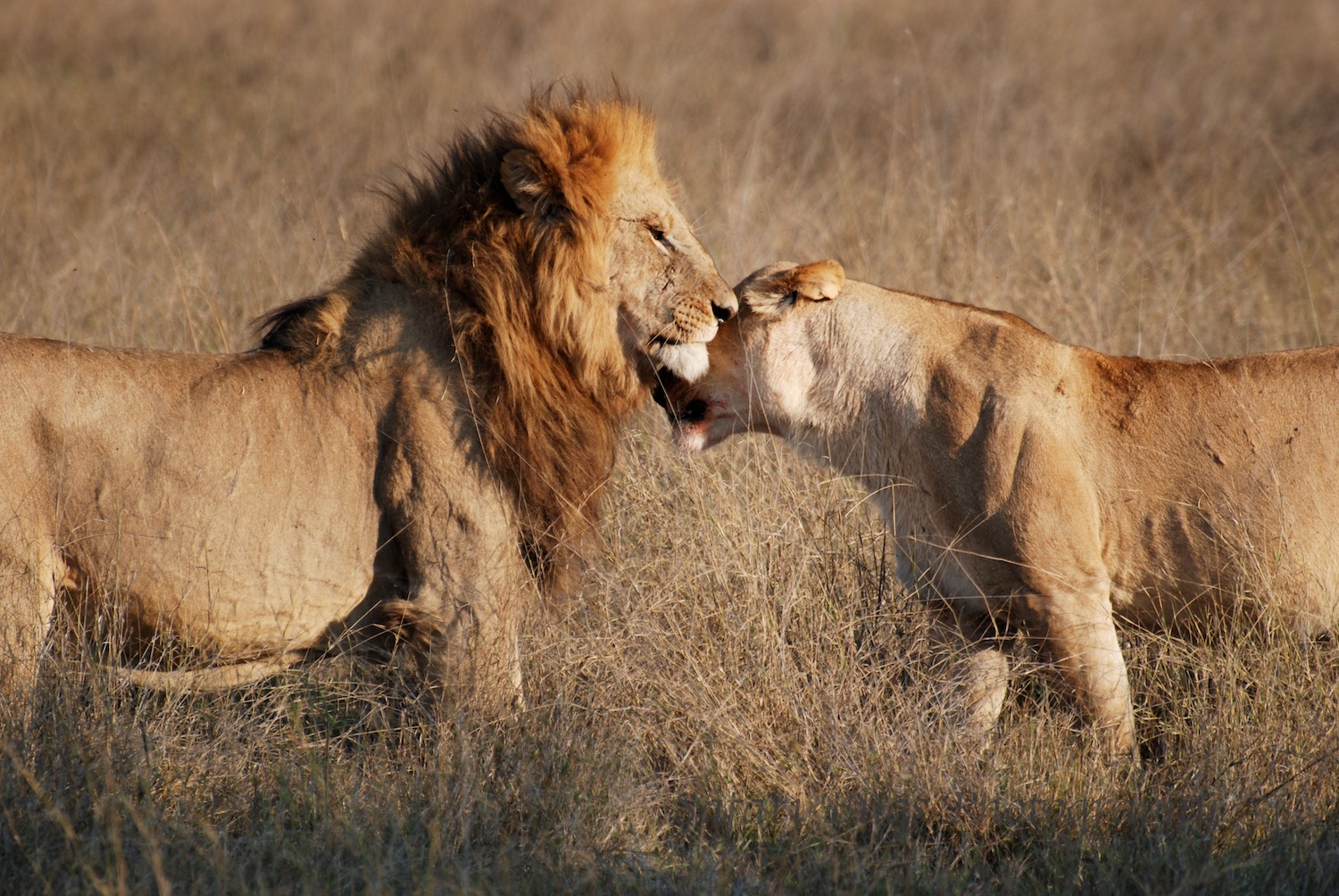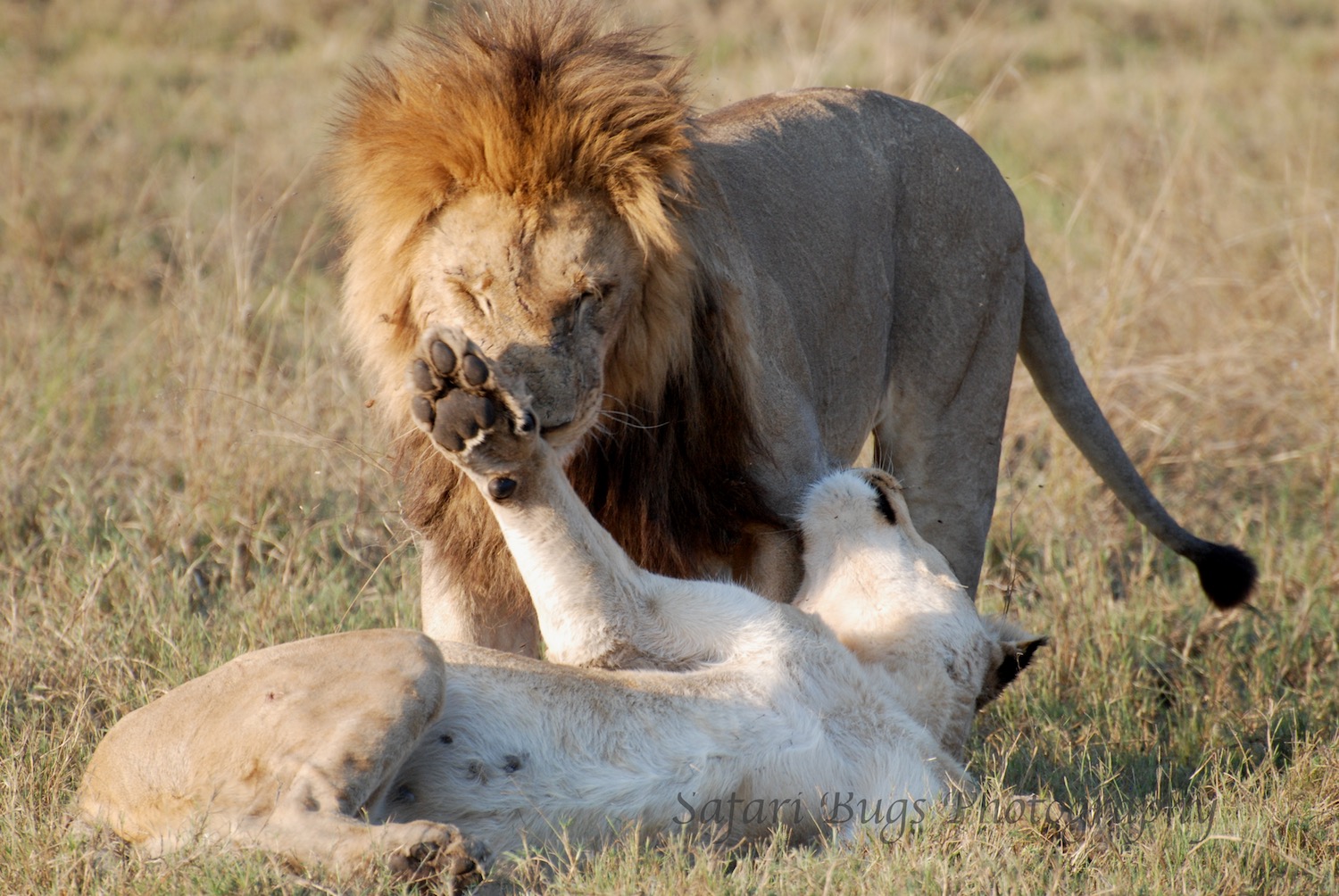(written by Jen with edits by Ian). Animals have to eat on a regular basis. Being an animal, you know this first hand. Some of us animals need food on a more regular basis (me) than others. Animals like the impala (or me) graze all day. The carnivores--lions, leopards, and cheetah--have to work a bit harder for food and, as a result, may go days without food (a nightmare thought for us grazers). After a few days without food, when a carnivore finally gets a piece of meat, understandably, it's a full-on gorging feast. Faces are covered in blood. Practically every piece of meat is devoured until stomachs are so full that they swing back and forth and the only comfortable position is lying on their back.
Three stuffed lion cubs in Sabi Sands, South Africa (while staying at Leadwood this past September)
Unsurprisingly, the female carnivores are responsible for feeding the young. As the working mothers of the Animal Kingdom, the female cheetah may have to not only feed herself but her five cubs. Given the amount of eating that has to go on to persist, you would think that seeing a lion, leopard, or cheetah make a kill would be common, if not a daily occurrence, at least an every other day experience while on safari. This isn't the case. You may see the unsuccessful hunt, but more often, you only see what happens after the kill--the eating and, of course, the laying about. (Photos to scroll through)
It is downright hard, sometimes impossible, to be in the right place at the right time to see an actual kill. We've spent months on safari, and prior to this past trip to Phinda, South Africa in August 2015, we had only seen one kill--a pride of lions killing a buffalo (the cover photo of this post). But during this last trip to South Africa, we defied the odds of seeing a kill when we saw two different cheetah kills during one morning drive.
It was an overcast cool day with a bit of water in the air, uncommon for the time of year, but good conditions for predator movement. A cheetah family, a mom with five (sometimes four) cubs, were on our hit list that morning. A ranger had left them the previous night as just "cheetah with four," with some uncertainty of the fate of the fifth cub. By the time we arrived the next morning, cheetah with four was once again cheetah with five, and number five seemed perfectly intact despite spending the night on his own. Indeed, as we watched mom hunt and the cubs follow, number five seemed to have a mind of his own, taking his own path--there's always one in the family. As a result, it was difficult to get a full family photo as mom and the cubs moved through the bush looking for edible, catchable prey.
We followed mom and the kids as mom was on the lookout for prey, walking past two inquisitive giraffes.
As we followed the cheetah through the bush, a grey duiker (a small antelope) was startled. Kill # 1 - mom had it by the throat in a matter of seconds. As mom suffocated the duiker, the kids started in on their meal.
After our first kill, we took a short tea break and then continued on our morning safari drive with no expectations as to what we would see next. We then came across a female cheetah with three cubs on the hunt in a wooded area.
We followed them through some treacherous terrain (for the vehicle, not for the cheetah). Cheetah mom first came across a male Nyala (a larger antelope too big for a single cheetah to take down) and passed. However, she quickly caught sight of a female Nyala and took off through the woods. We heard the thump; kill # 2. And then it was quiet for a short period of time until mom started calling for her cubs. We followed the sound to the sight of the kill.
We hadn't had breakfast yet either. So, we joined the cubs in a meal. That's right; we had no trouble scarfing down salami and sausage sandwiches while the Nyala was spilling innards and blood.
I came across this quote while putting together my thoughts for this post which reminded me of this extraordinary morning on safari: "Every morning an impala wakes up knowing that it must outrun the fastest lion if it wants to stay alive. Every morning a lion wakes up knowing that it must outrun the slowest impala or it will starve. It makes no difference if you are a lion or an impala, when the sun comes up in Africa you must wake up running." This certainly encapsulates our morning; the cheetah chased the prey, and we chased the cheetah.
This brings me to the story of that first kill at Duba Plains in Botswana, where a pride of lions took down a buffalo. It was eight years ago, but the memory is clear. The weather was brisk, but the sun was strong. As we left that morning for the drive, the camp manager gave us the pre-game speech: "You are here to see these lions hunt buffalo. If they are hunting, you will stay with them until they make a kill." I wanted to start doing high fives and yelling "let's do this!" like we were getting ready to take the field. We didn't need to go far to find the lions, and it was obvious from their intense behavior that it was game on. The air was electric.
The male lion only made a brief appearance before the kill, leaving the pride to patrol his territory. He had recently taken the pride over and was busy chasing out the former leader's son, Junior (who was being protected and fed by his Grandma or so the story is told).
That left the ladies to get the job done, and they had their eyes on the buffalo herd. To date, these lionesses are still the most impressive killing squad we've seen. They executed the attack plan with strategic precision. The photos still give me chills of excitement.
The lionesses even had appropriate names. Below is a portrait of Machine Gun, so nicknamed because she was certified by the guides as a "killing machine." True to her name, she was the force behind the killing blow in this story, along with Silver Eye, who was the archetypical bad gal in the National Geographic documentary The Last Lions.
Trailing the buffalo herd were the duga boys (pronounced "dugger boys"), the retirement home for the old buffalo bulls. The females spotted this weakness and split up, surrounding the duga boys from all sides, isolating one for the kill.
And then the buffalo was down. As one lioness administered the kiss of death (suffocation), the other lionesses began eating the buffalo from behind. The death is slow; it was over 20 minutes before the buffalo stopped struggling and screaming. It's not easy to watch, hear, or smell. The air takes on the metallic smell of blood mingled with the putrid smell of the intestines. You hear the tearing of skin and the moaning of the buffalo, and you see the struggle for life leave the buffalo's eyes.
It quickly becomes a very bloody affair.
Of course, once the buffalo had been killed and opened up, the male returned for his share of the food and one of the ladies. As it turns out, he had been very busy chasing Junior through the camp while his pride was securing lunch for him.
That evening, we celebrated our and the lions' good fortune in dance. And, by the time we returned to the scene the next morning, the buffalo had been picked clean.
*P.S. - This trip was planned by our wonderful travel agent (and friend), Jeanie Fundora Africa Safari Expert at Exeter Safari Company. Jeanie has been planning trips to Africa for 23 years and has been named by Travel + Leisure magazine to its prestigious A-List for her expert knowledge in Africa, having traveled to Africa 25 times. Jeanie is a fierce advocate for her clients, making sure every need is accommodated on diverse trips from honeymoon safaris to multi-generational family safaris in both East and Southern Africa, the Indian Ocean Islands as well as India. If there’s a way to make out-of-the-ordinary details work, Jeanie will find it. Contact jeanie@exetersafaris.com to inquire about a tailor-made safari.
*P.S.S. My brother, Steve (who should go on a safari with his awesome wife Ashleigh), provided editorial support, i.e., finding my numerous typos. And, of course, Ian provided invaluable content for this blog and is my favorite travel companion in life!



